So we turn up this morning bright and early and pop in to the ticket office on the off chance there might be some available seating on the trains to Hiroshima to see that the next half a dozen trains between 0900 and 1100 are fully booked except of course the first in first served, first three unreserved carriages. So off we go and line up to get on one of those. Only the trains are coming from Tokyo and are well and truly full by the time we get on, and we end up having to jump on and stand in the aisle thinking we should be able to get a seat when people get off in Kobe, about 10 mins down the track…. but what actually happens is that hardly anyone gets off in Kobe and I end up standing on the bullet train for nearly an hour. I’m standing there in ever increasing pain thinking over and over, ‘I’m so fucked. I’m so fucked. My back. Argh. Shit. Maybe I should just sit on the damned floor, emergency hazards be damned. Breathe, breathe. I’ll just squat for a bit and that’ll relieve the tension on my lower back. Maybe I should try something in Google Translate and see if I can ask someone to offer me a seat. I’m so fucked. I’m so fucked. Breathe, breathe, breathe…’ and so on and so forth. It’s really hard to advocate for yourself in situations like these when you look like you have nothing wrong with you!
One of my biggest problems, when my pain is arcing right up, is my habit of not breathing… It’s like when you kick your toe and you go ‘Shit!’ and then you take a sharp intake of breath and you kinda hold your breath against the pain… Yep, like that. But for as long as the pain refuses to abate – and it just does not. Which leads to lightheadedness, perspiration not associated with ambient temperature, dizziness, and eventually fainting and/or nausea. So I was getting pretty damn desperate by the time people got off in Okiyama and I finally managed to get a seat. We had a big day ahead and I was feeling totally screwed by the time we got there 🙁
We eventually arrived at our destination. While Mr K went to the ticket office to try and book us some seats on a train for the return trip in an attempt to avoid this same drama re-occurring on the way, I wandered outside and saw these beautiful and very western European statues – I have no idea what they were celebrating/commemorating, as the plaques nearby were not in English and the Googles have failed me. Still rather lovely, and Mr K had some moderate success and managed to secure a single seat on the 1722 train back to Osaka in a reserved carriage which immediately removed a huge pile of impending stress!
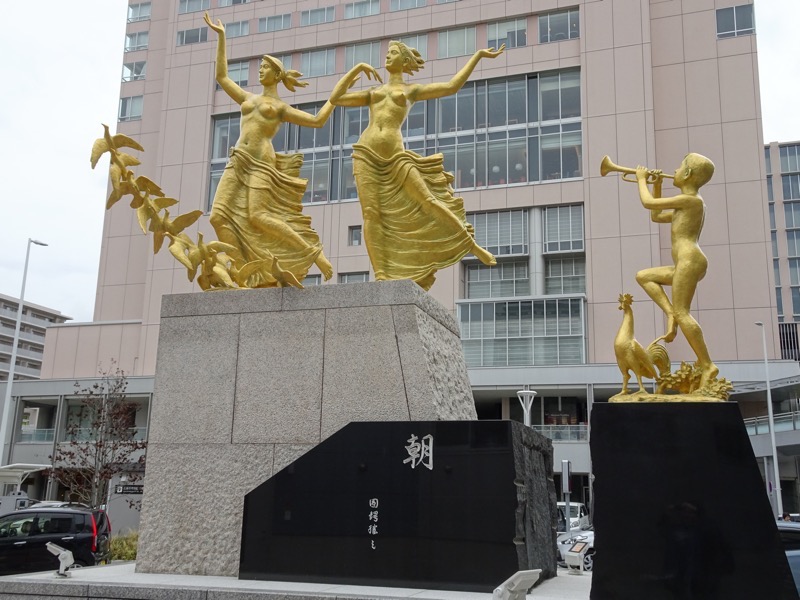 Our first stop was to Hiroshima Castle…
Our first stop was to Hiroshima Castle…
Originally built on a low lying delta, Hiroshima Castle, was the home of Mōri Terumoto, the daimyō (feudal lord) of Hiroshima region. The castle was constructed in the 1590s, but was destroyed by the atomic bombing that occurred on August 6, 1945. The castel was rebuilt in the 1950s with a complete replica of the original, which now houses a museum of Hiroshima’s history prior to WWII.
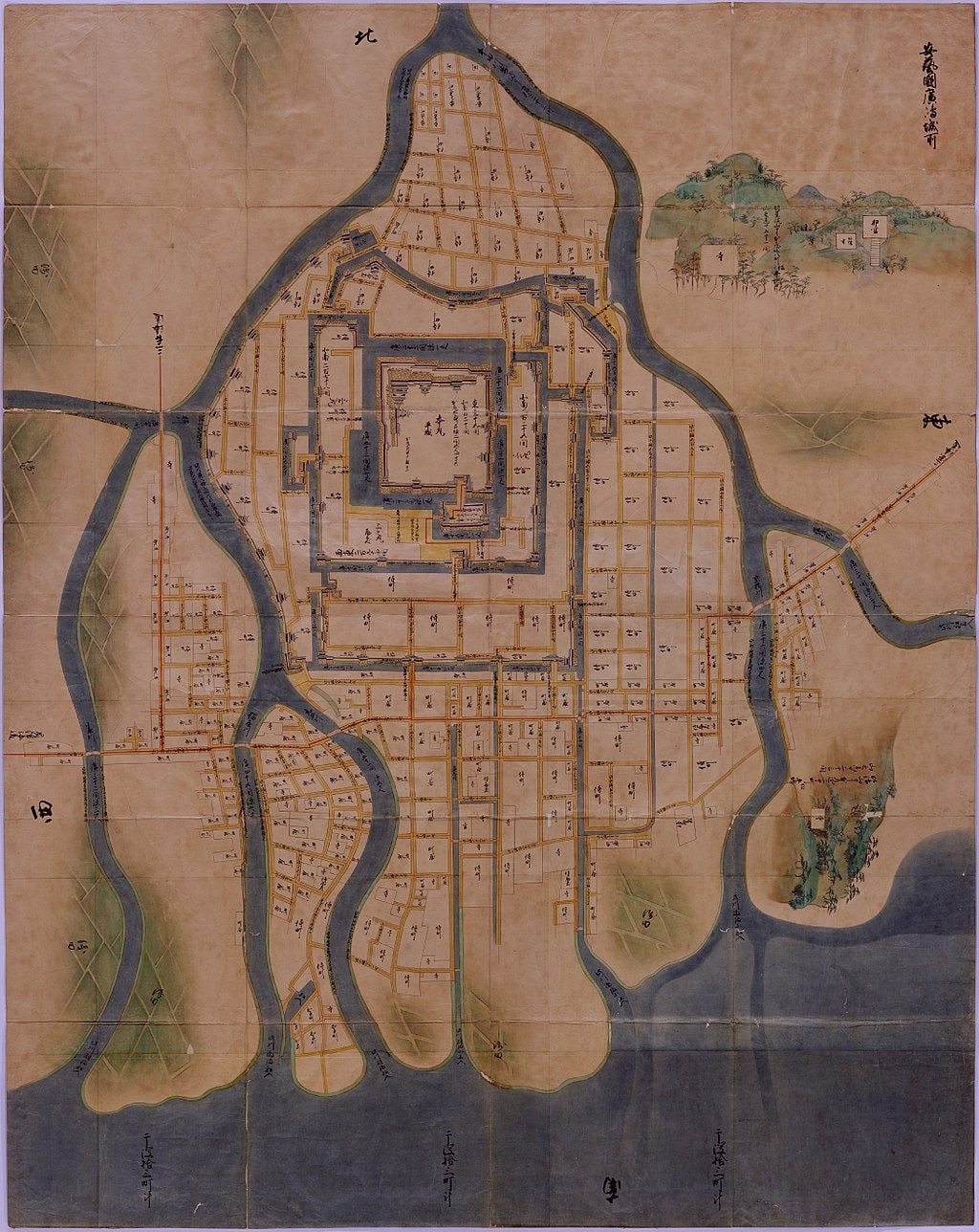
Being a low lying area, the moats were not as steep or as impressive as the Osaka castle defences… originally the castle had a three concentric moats, the outer of which had a much higher in water level – it was built such that they could destroy the very outer moat wall easily and flood any enemy camp that might be holding the castle under siege. Now the two outer moat areas have been filled in and overtaken with urban developments.
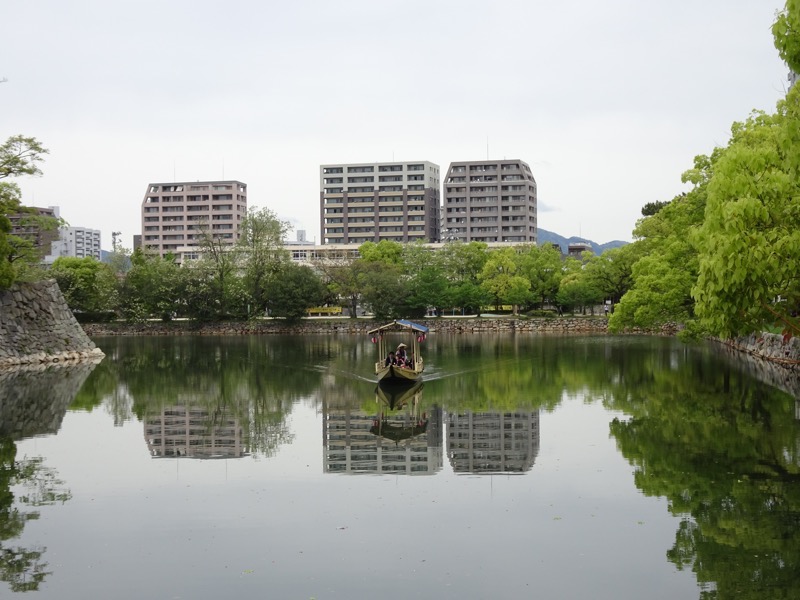
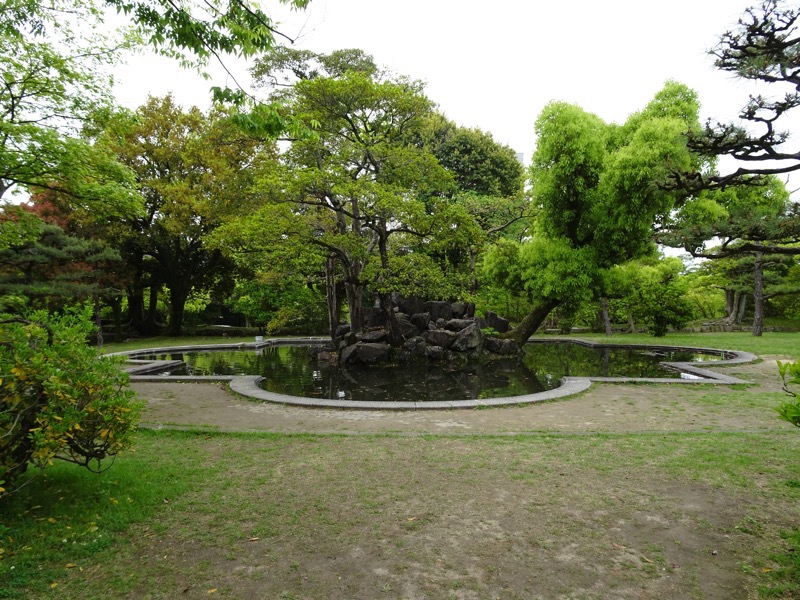
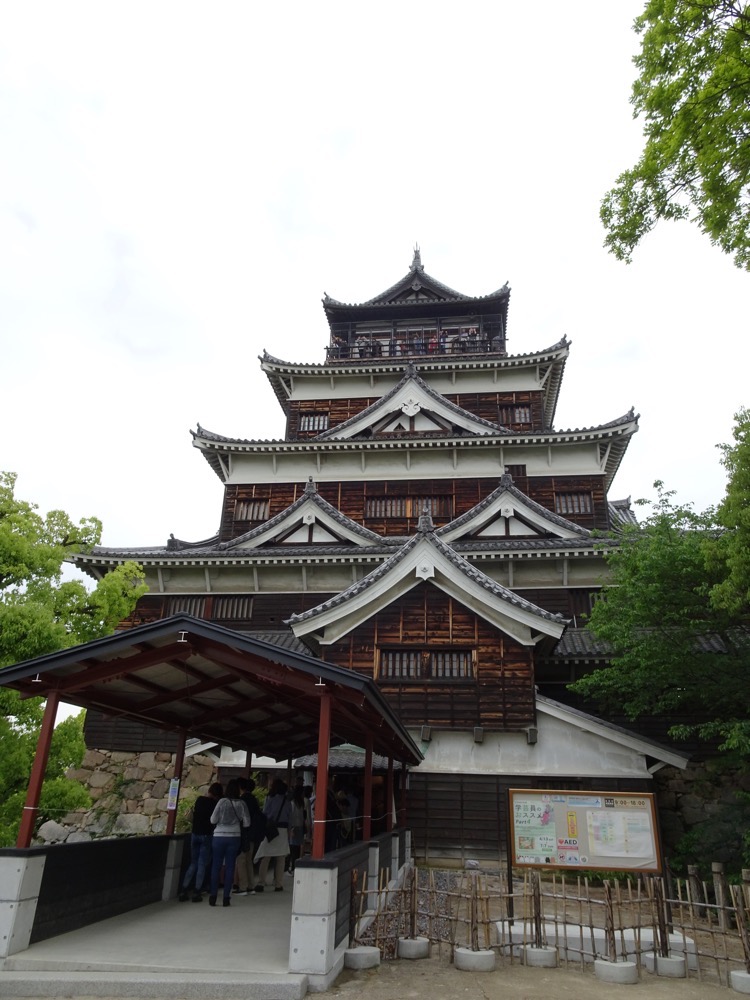
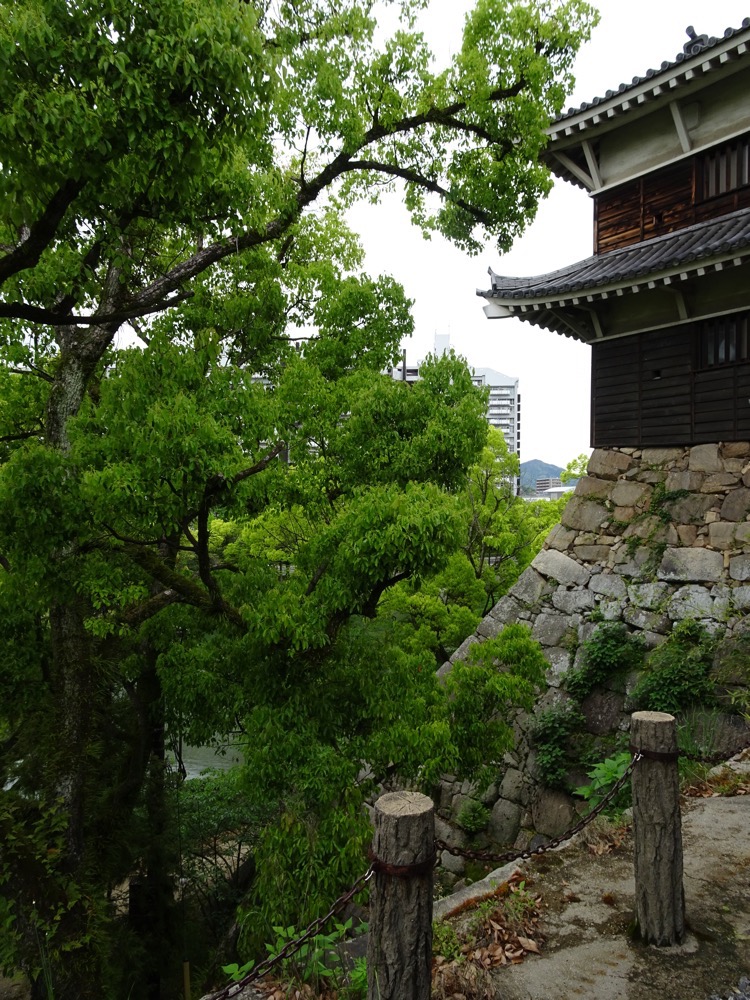 The Castle houses an extensive collection of pre-Reformation era displays – swords, armour, household objects and historical items, however, photography is prohibited and there is no English guidebooks, so I can not share most of what we saw inside.
The Castle houses an extensive collection of pre-Reformation era displays – swords, armour, household objects and historical items, however, photography is prohibited and there is no English guidebooks, so I can not share most of what we saw inside.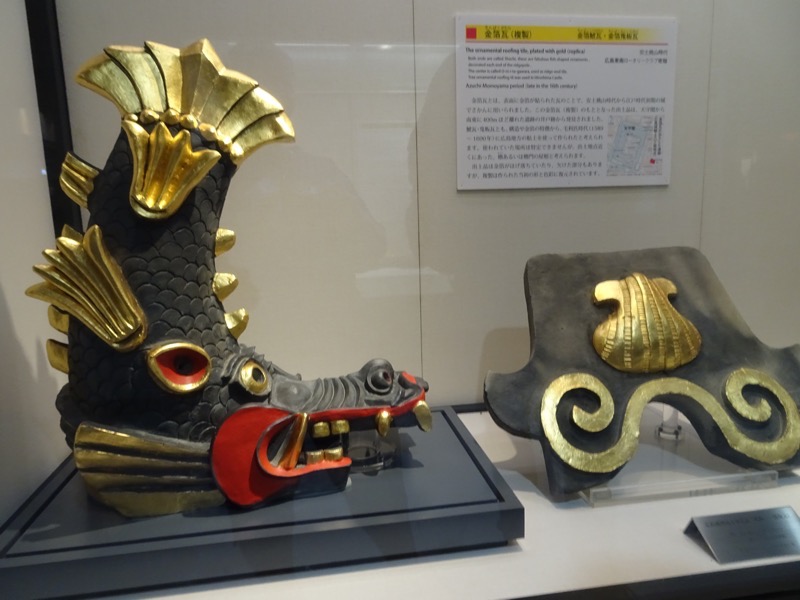
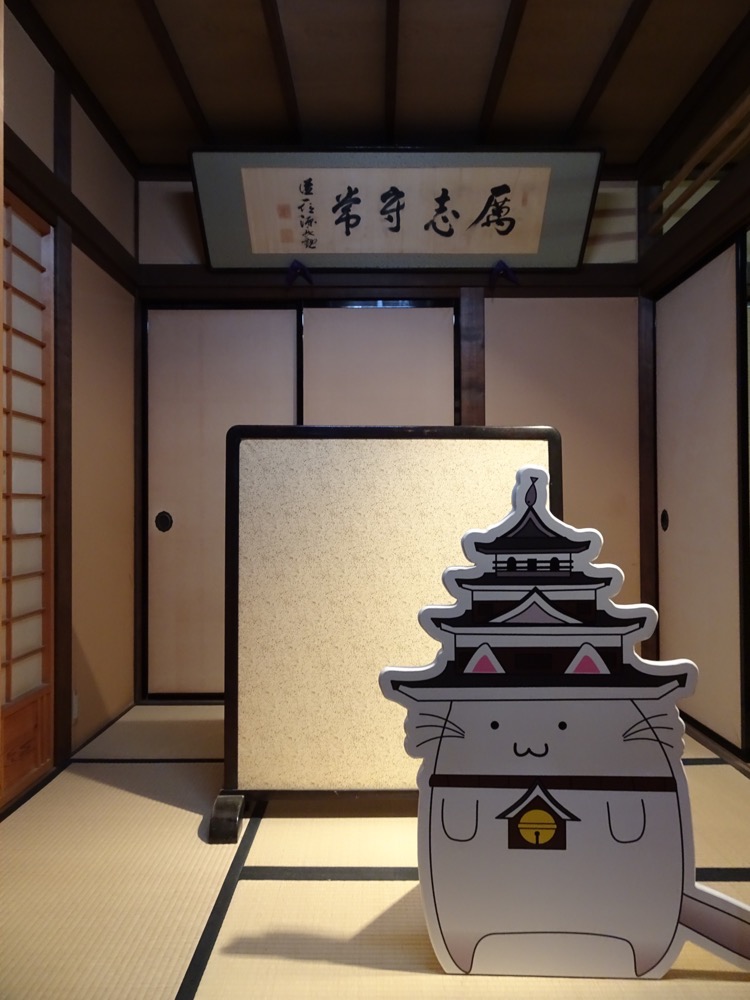 Some reconstructed rooms as they would have been in the late 1500s when the Mōri family ruled the castle.
Some reconstructed rooms as they would have been in the late 1500s when the Mōri family ruled the castle.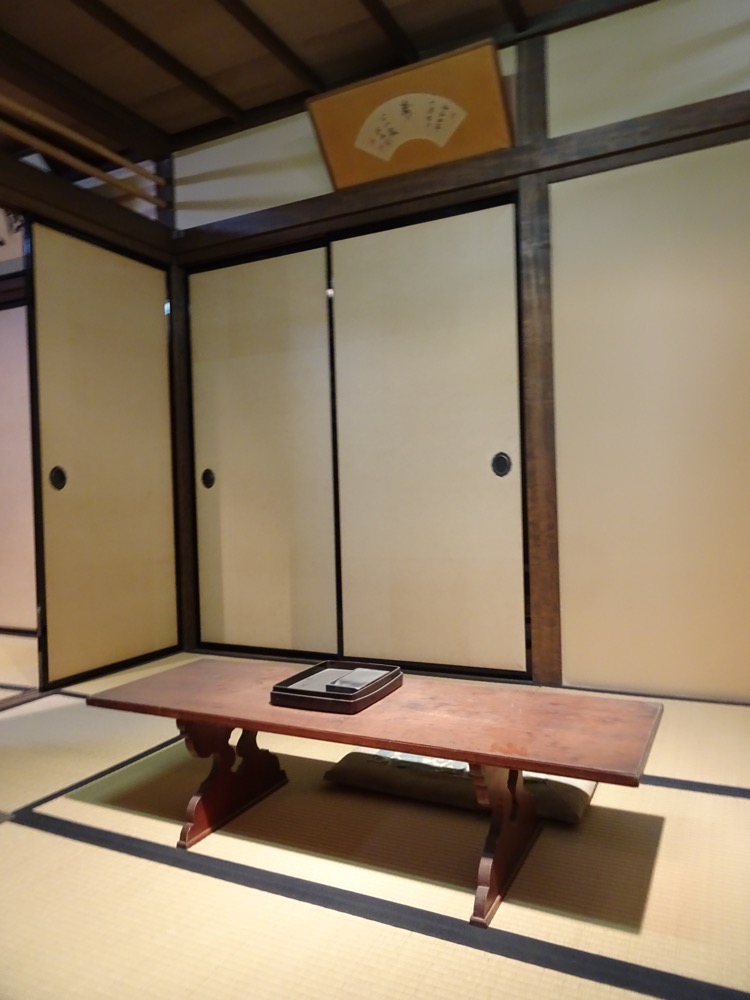
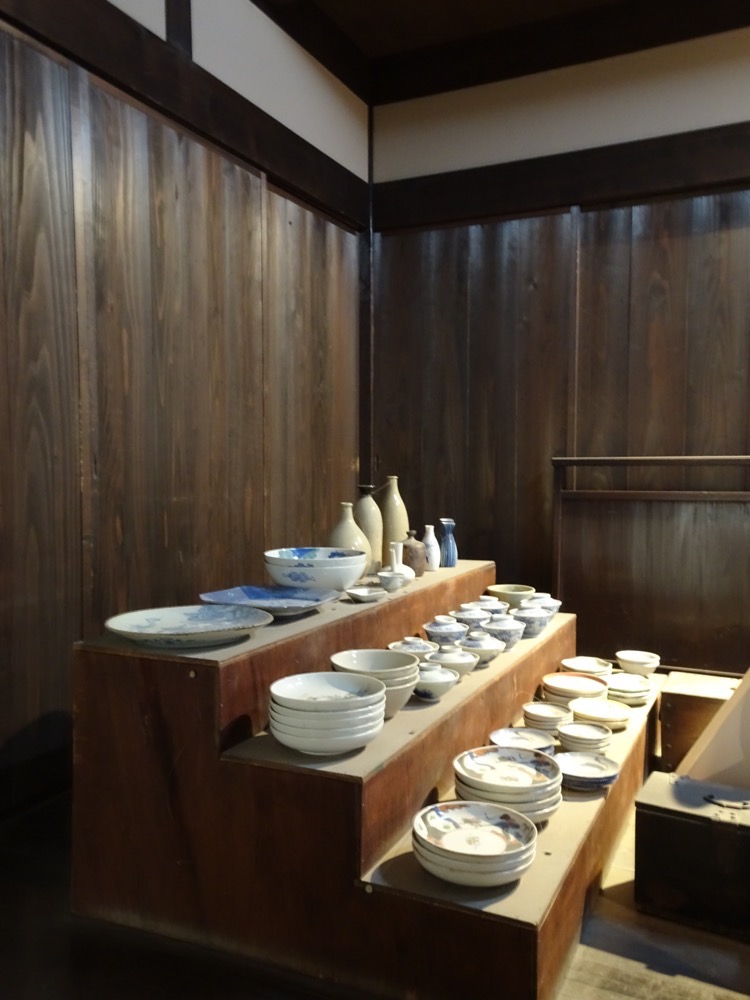
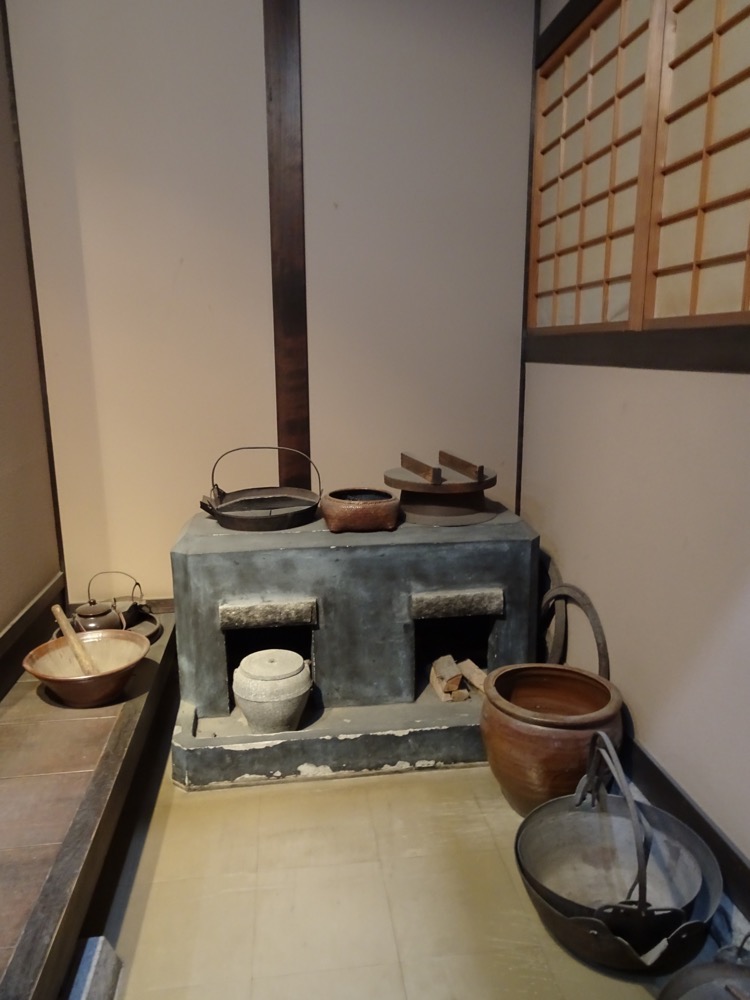 The views from the top of the castle are quite impressive – you can imagine how the advantage gained as the countryside was largely flat.
The views from the top of the castle are quite impressive – you can imagine how the advantage gained as the countryside was largely flat. 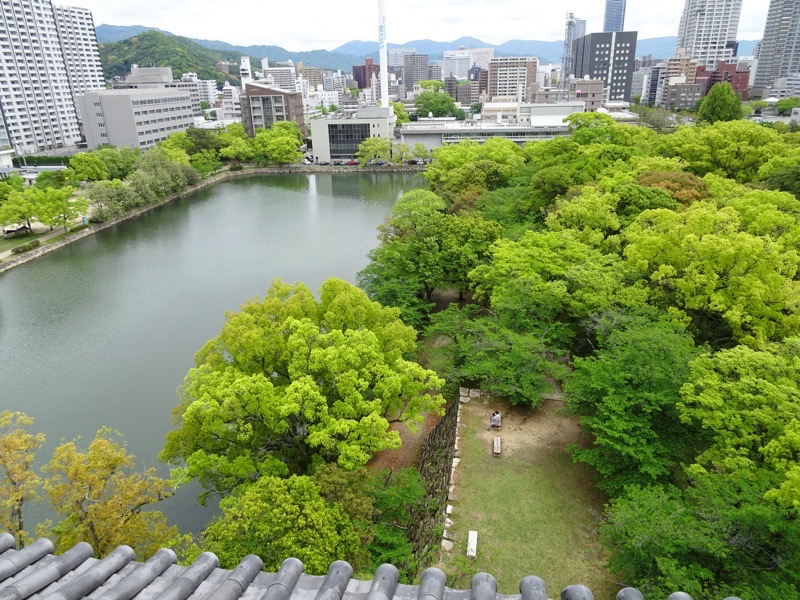
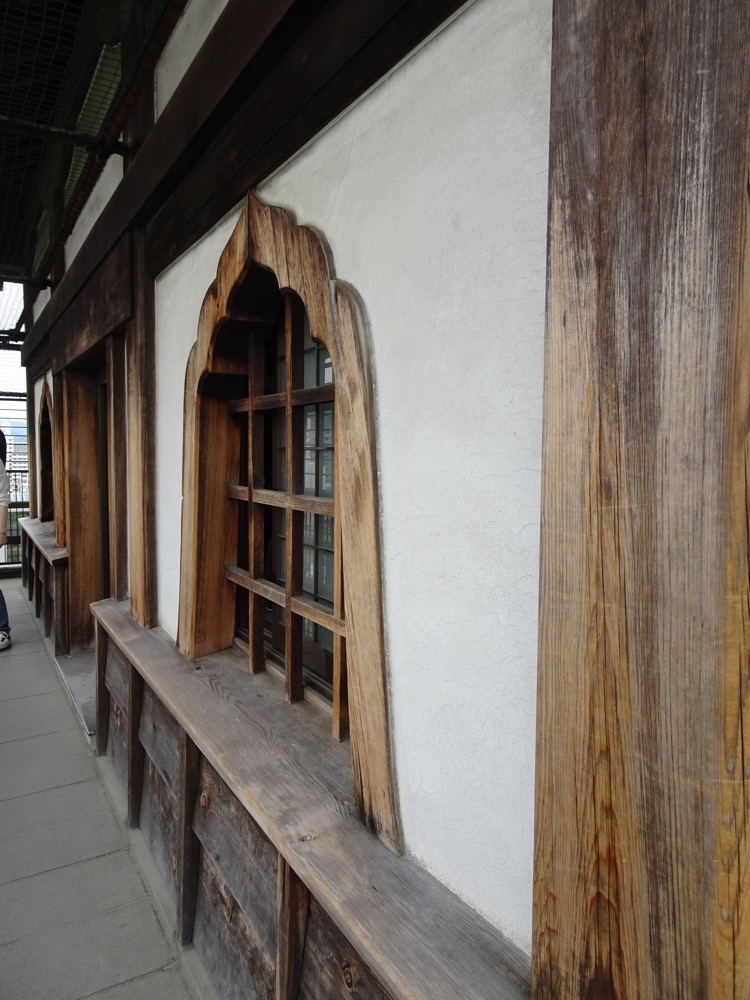
On the Castel grounds is the Hiroshima Gokoku Jinja is a Japanese Shinto Shrine. Today is a special day – the Emperor of Japan is abdicating in favour of his eldest son and with his abdication begins a new era, and the people are out in a celebratory mood and paying their respects at the various temples located around Japan.
There was an inordinately long line to visit the temple, people were paying their respects or paying homage to crying babies or something? I couldn’t quite figure it out. There seemed to be a lot of grandparents about holding small children who were uncharacteristically for Japanese children… crying very loudly!
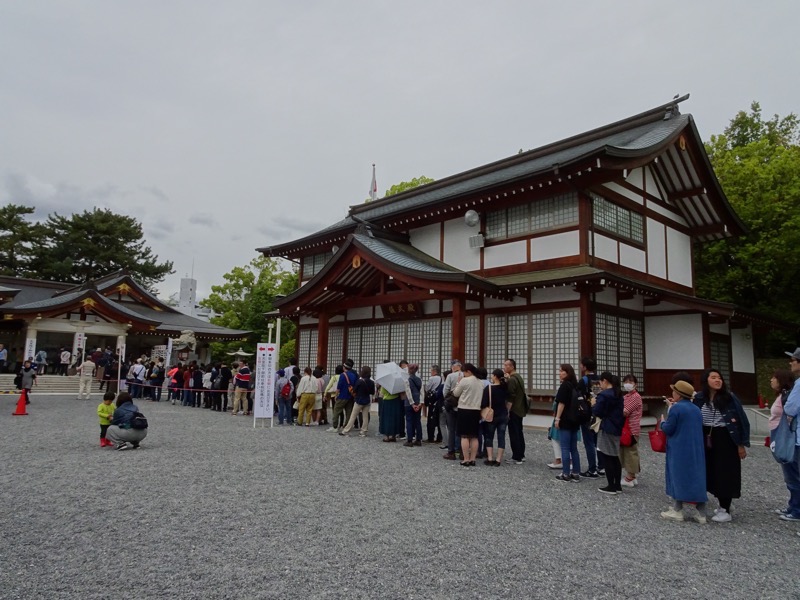
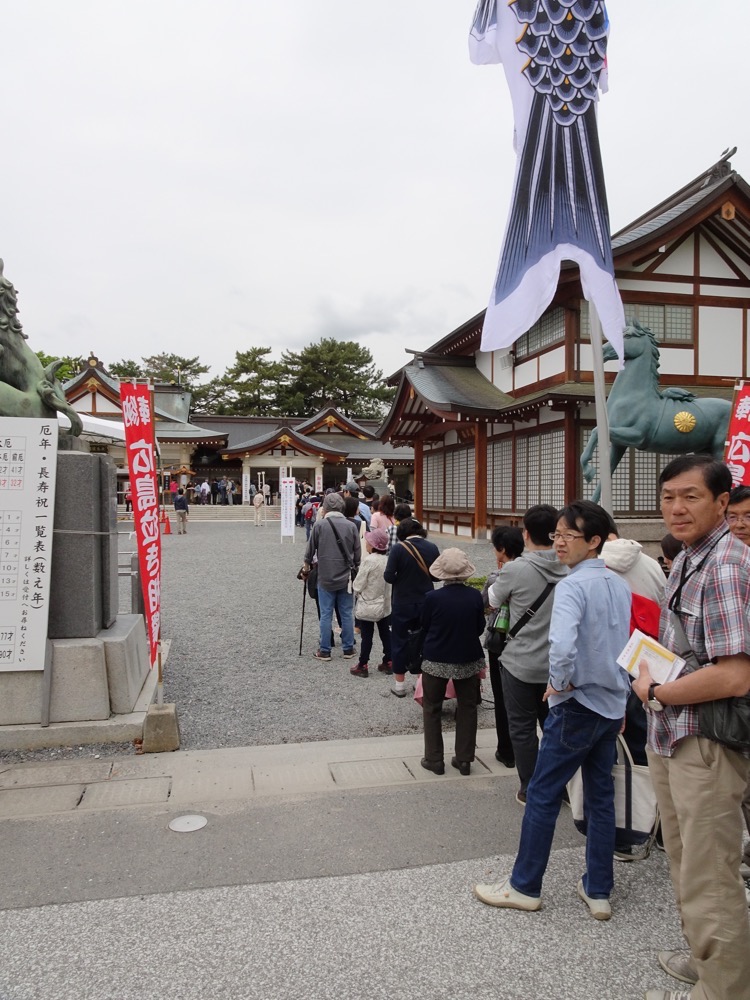 The queue to spend 30 seconds or some at the temple was inordinately long.
The queue to spend 30 seconds or some at the temple was inordinately long.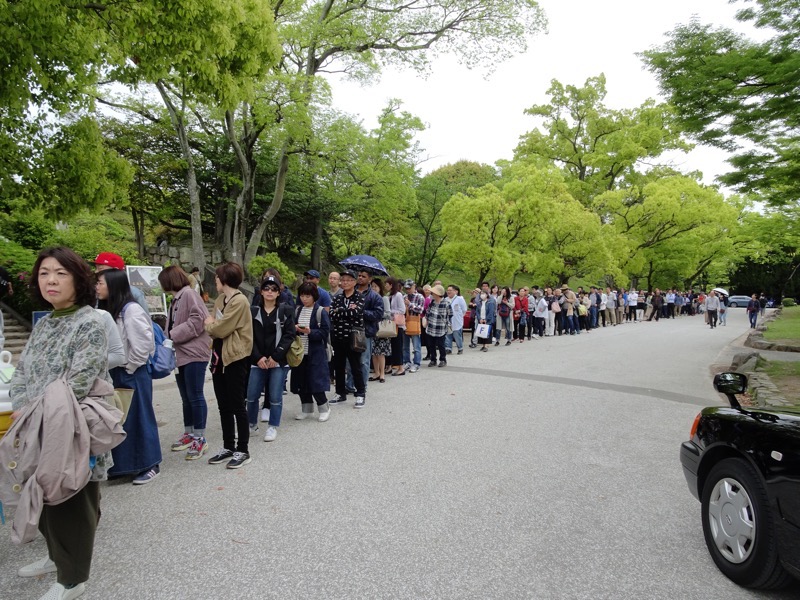 Then I saw this sign and realised it was actually something to do with crying babies… but it didn’t make a whole lot more sense.
Then I saw this sign and realised it was actually something to do with crying babies… but it didn’t make a whole lot more sense.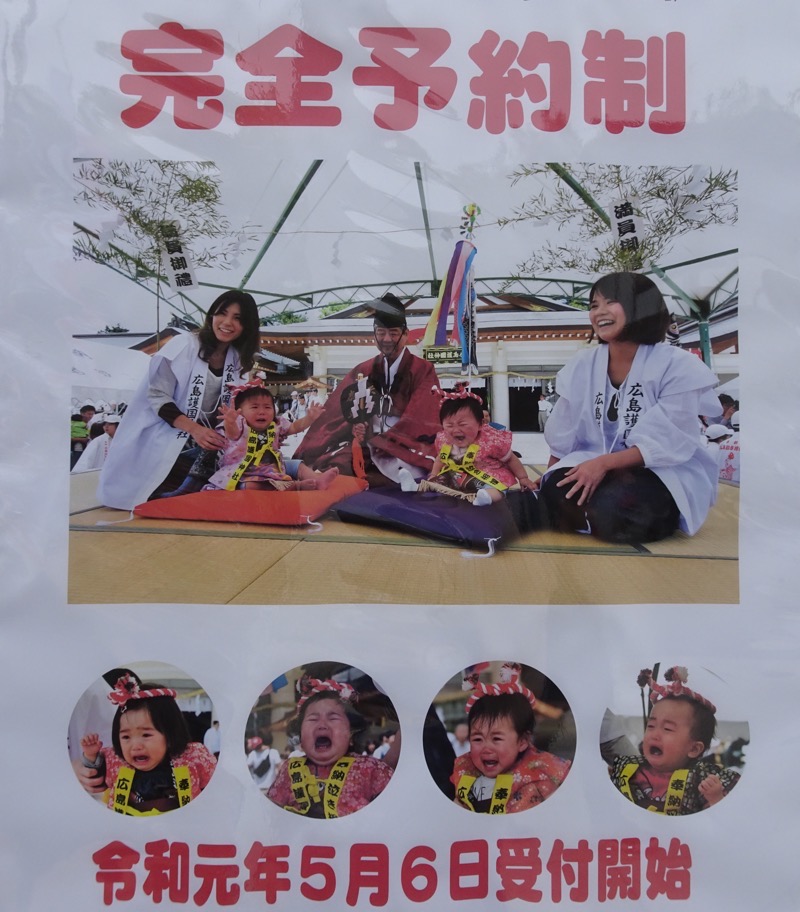 Eventually I found some information in English that read:
Eventually I found some information in English that read:
“Crying Sumo – The rule of it is the baby win who cry first.
Baby is a treasure for them family, local and country. As the proverb goes say “A crying baby usually prospers”. According to medical science, crying is important efficacious for baby. It develops them cardiopulmonary function, they grow up in good health. Tradition says that baby’s energetic crying voice lay a ghost since ancient times, baby’s crying voice exorcise evil spirits and incur good luck. It’s the religious services what exorcising evil spirits and incur good luck for baby’s healthy growing by divine protection.”
So now, I’m thinking all those parents and grandparents were going around pinching these babies to make them cry!
Nearby was the Carp Temple which wasn’t as busy as the main shrine.
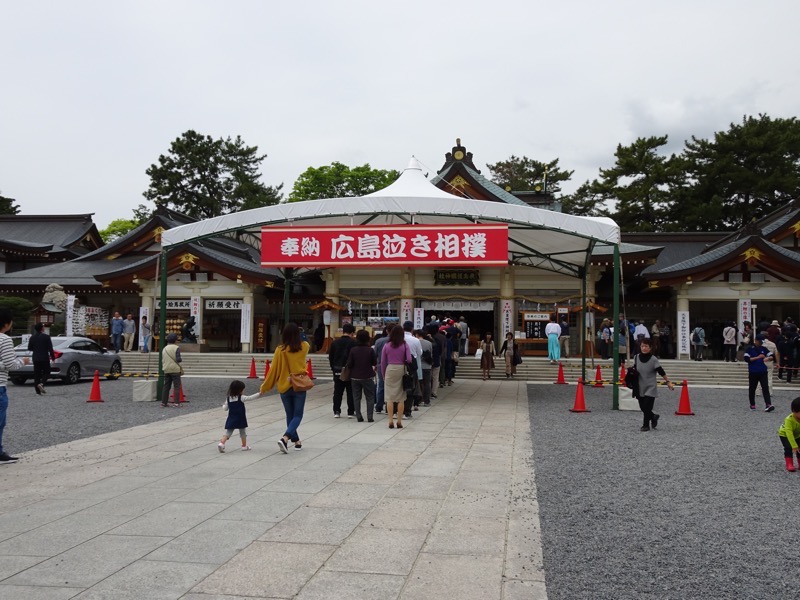 Here is where you can find the famous statue of a Carp Swimming up a Waterfall. Hiroshima castle is also often called Carp Castle. The statue symbolises the following types of good luck:
Here is where you can find the famous statue of a Carp Swimming up a Waterfall. Hiroshima castle is also often called Carp Castle. The statue symbolises the following types of good luck:
Success with a difficult challenge
Achieving a goal
Good luck and success in business.
These two Carp Swimming Up in Harmony symbolise these kinds of good luck:
Family well being
Happy marriage
Fulfilment in love
So you should ‘please make a wish and touch this statue’. All of which seems a bit whimsical and nonsensical but far more benign compared to other world religions.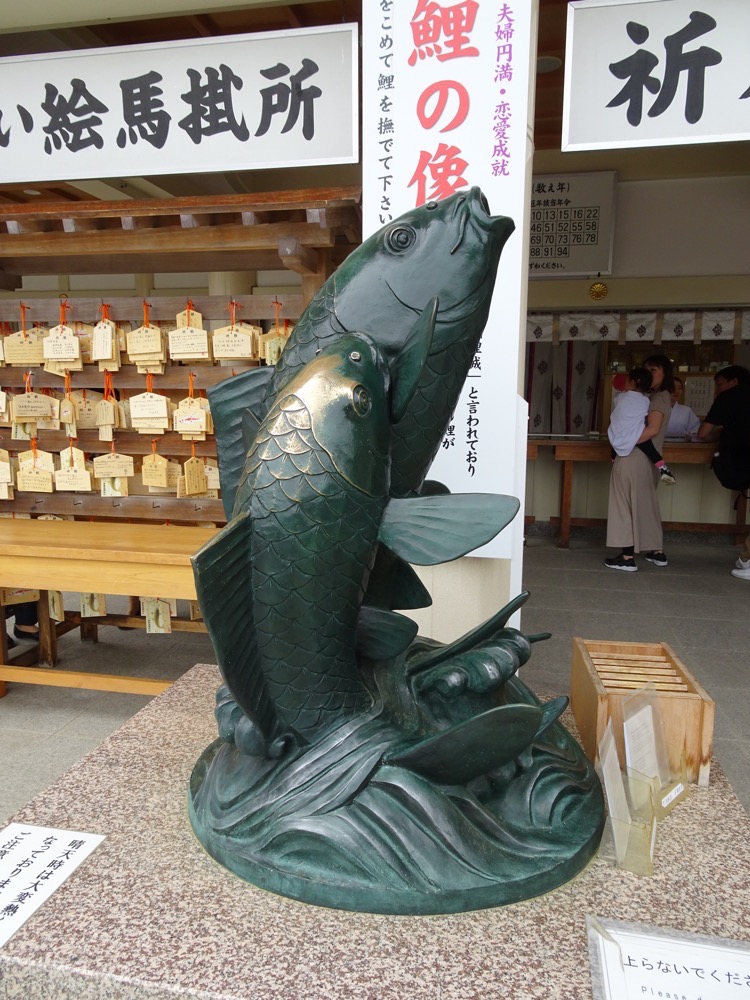 Votive plaques where visitors have written out their wishes for the future after visiting the shrine.
Votive plaques where visitors have written out their wishes for the future after visiting the shrine.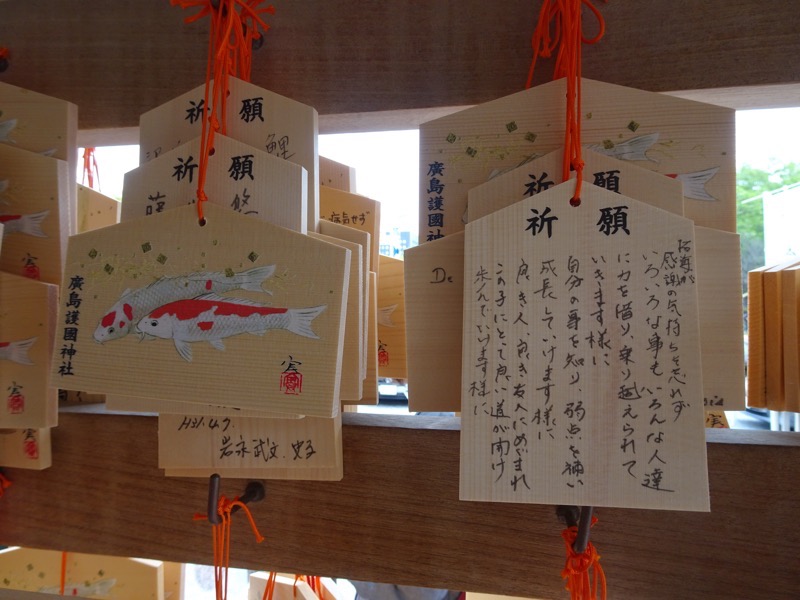
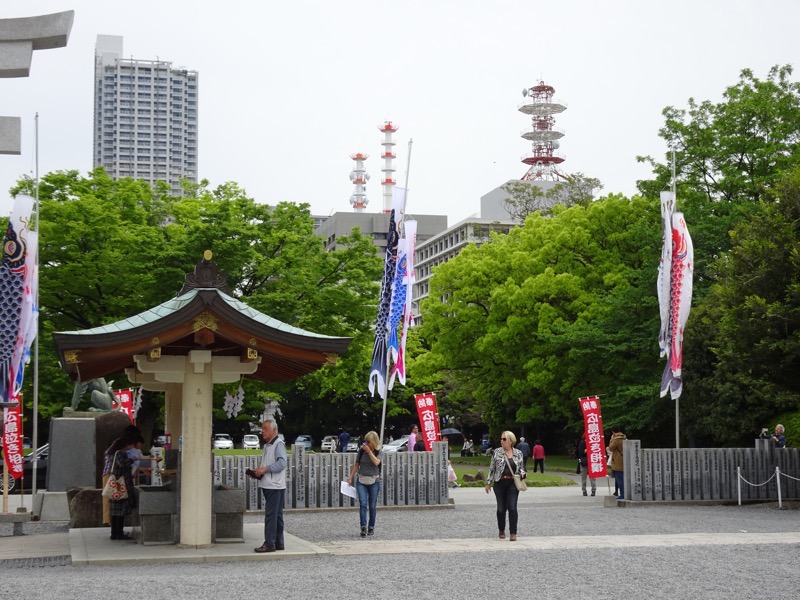
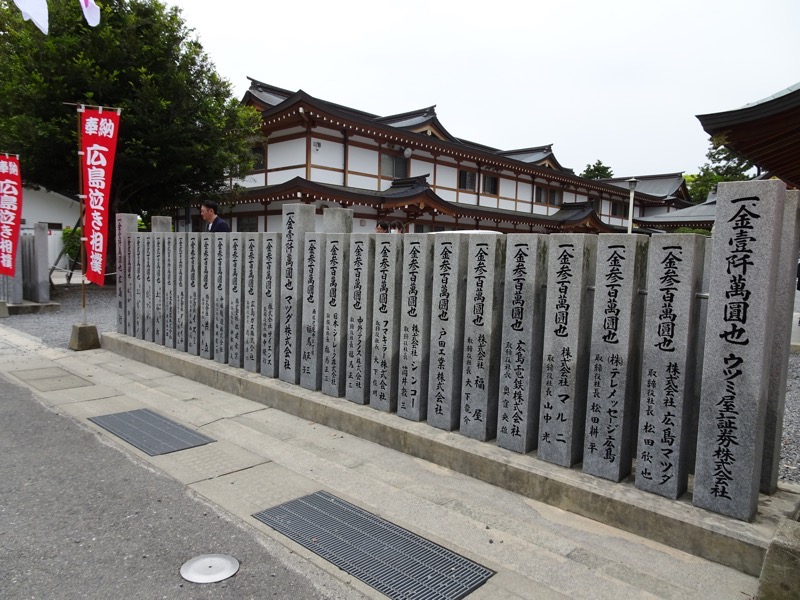 Close by is one of four known ‘atomic trees’, this one a pussy willow that survived the atomic blast in 1945. It is located 740m from the epicentre of the blast. It is quite remarkable that any trees remained given the buildings were completely flattened.
Close by is one of four known ‘atomic trees’, this one a pussy willow that survived the atomic blast in 1945. It is located 740m from the epicentre of the blast. It is quite remarkable that any trees remained given the buildings were completely flattened.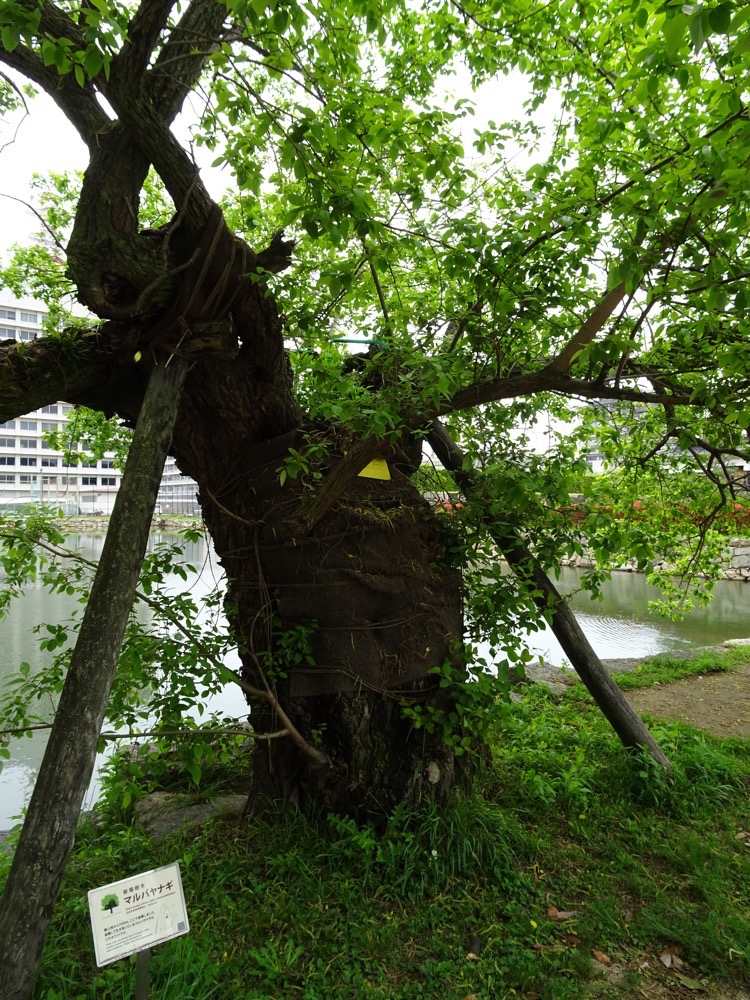 The castle complex directly after the atomic bomb was dropped on August 6th, 1945… image (in a rather circuitous route) via the United States National Archives via japanairraids.org
The castle complex directly after the atomic bomb was dropped on August 6th, 1945… image (in a rather circuitous route) via the United States National Archives via japanairraids.org
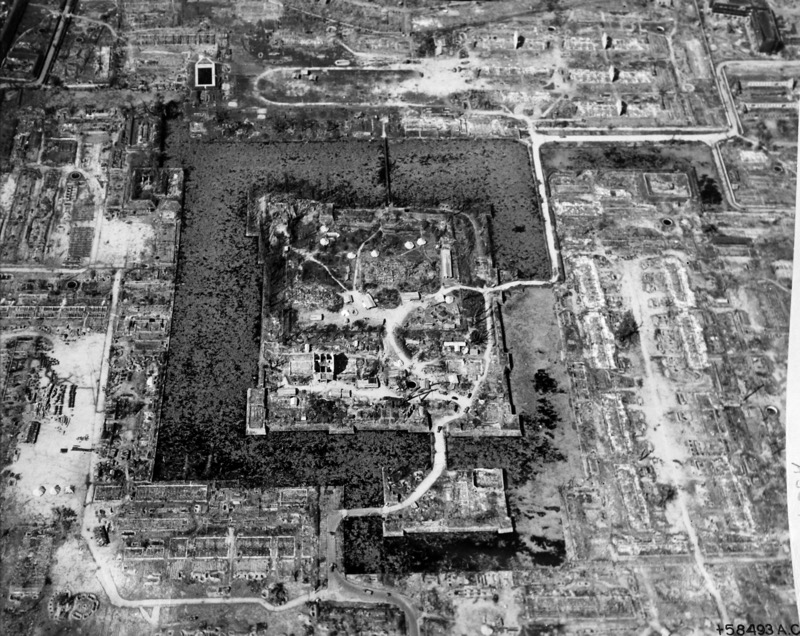 The outer keeps.
The outer keeps.
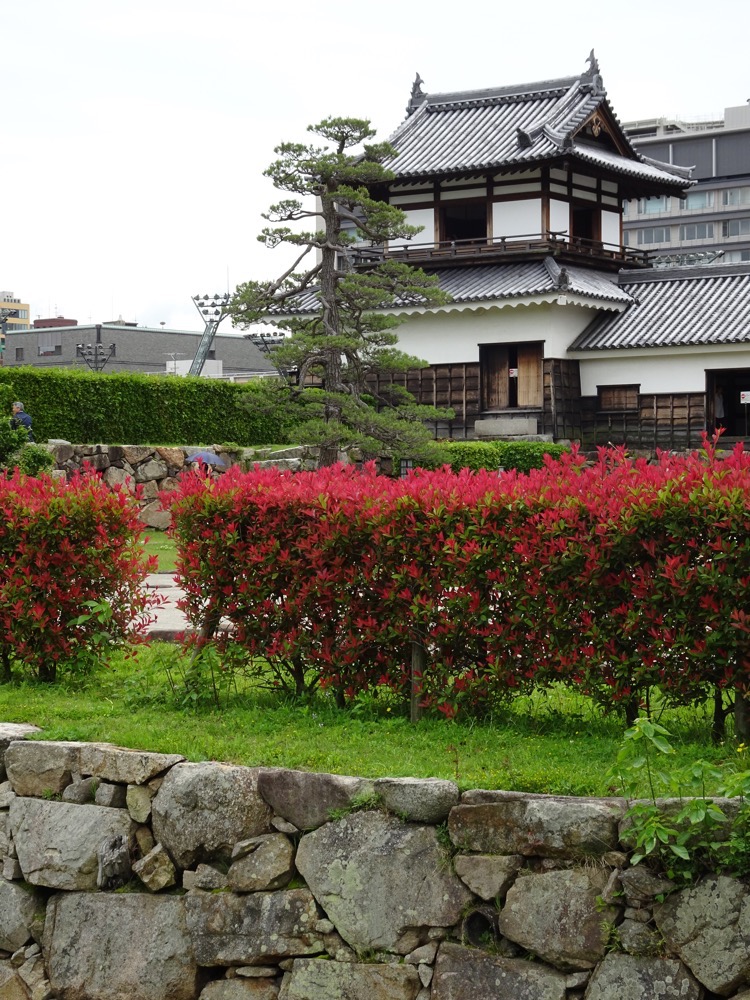
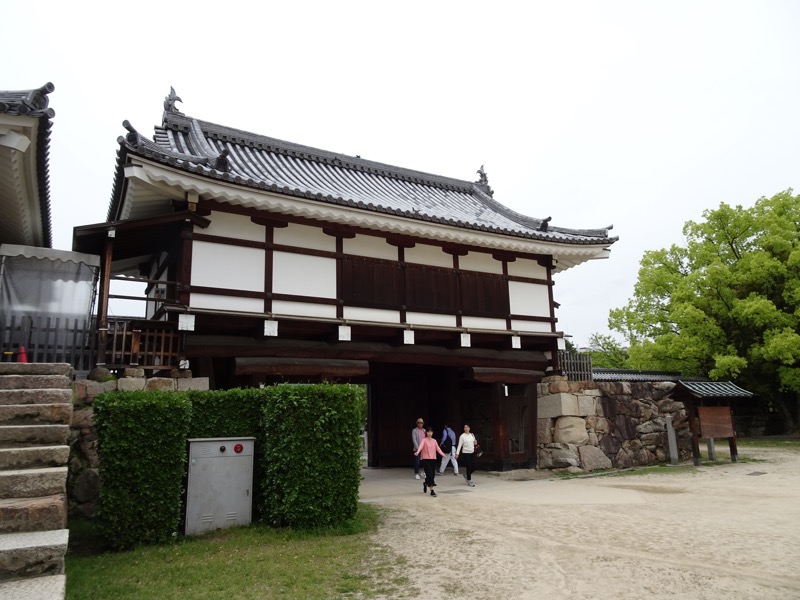
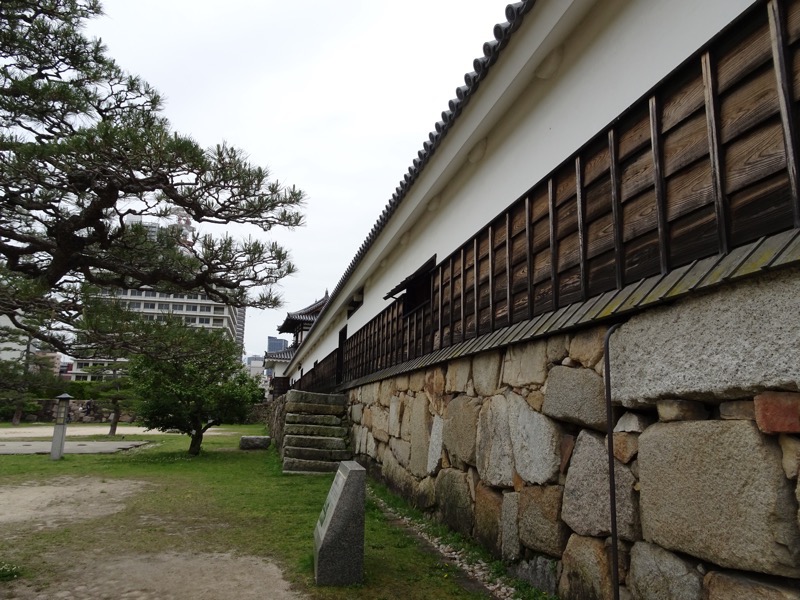
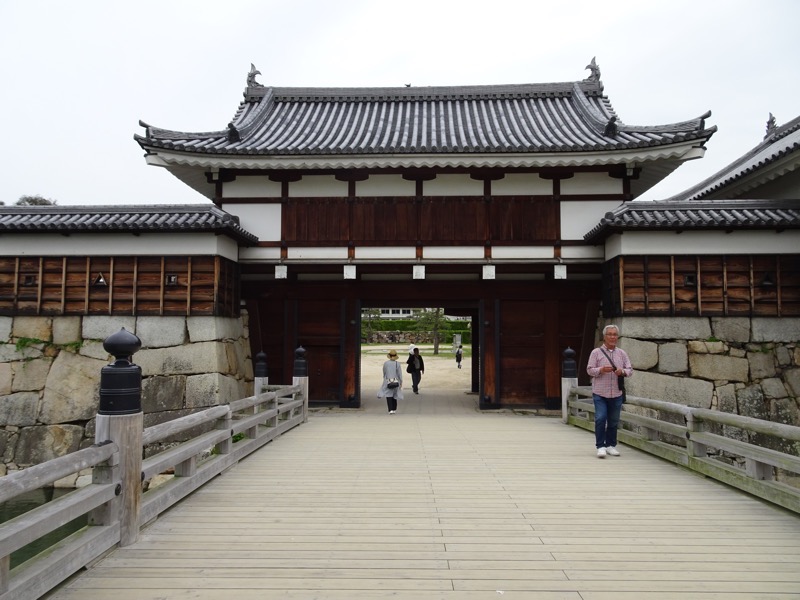
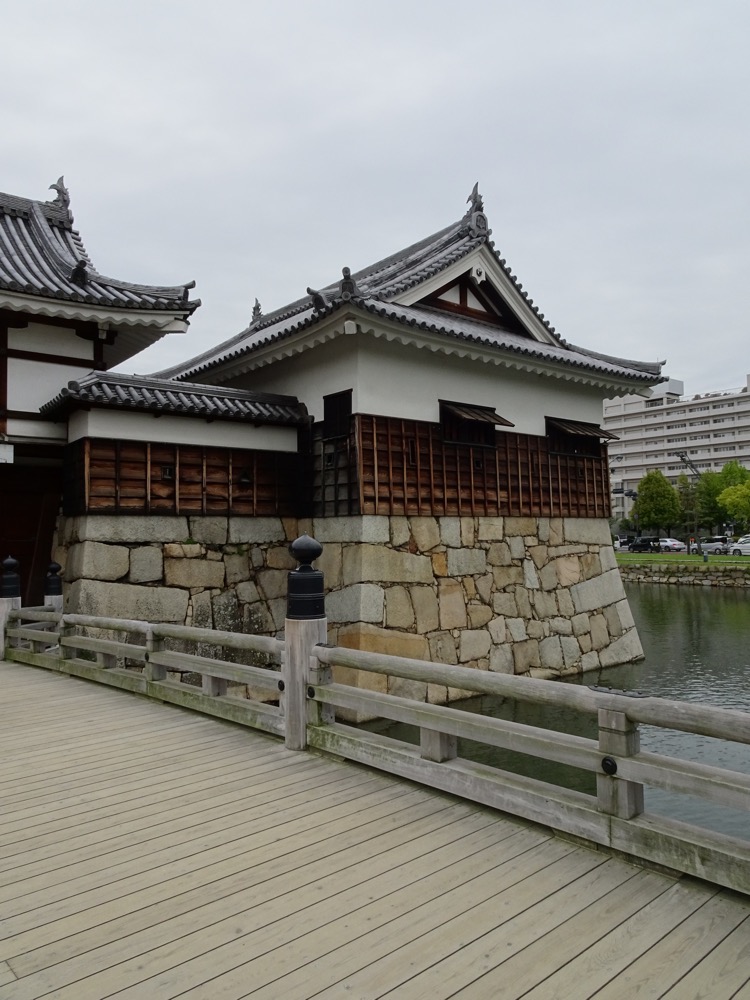
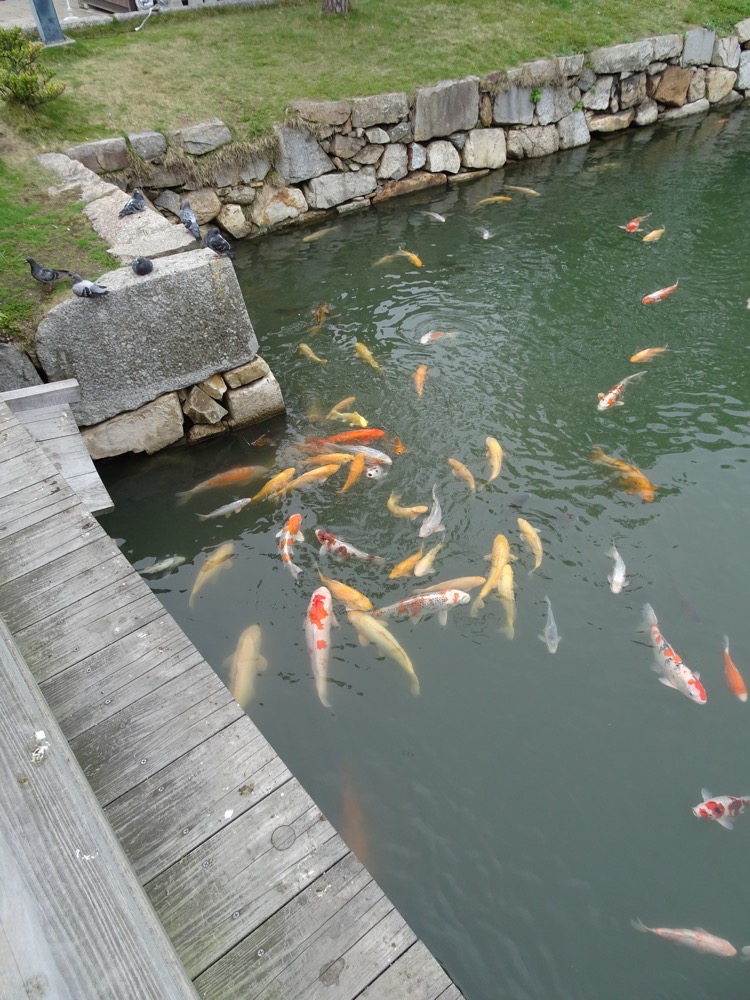 After we left the Castle complex we stopped momentarily at the Hiroshima Museum of Art, and were contemplating going in, but it turns out this museum was full of European artworks, so we merely stopped for a cup of Elderflower soda and some sake cake before moving on.
After we left the Castle complex we stopped momentarily at the Hiroshima Museum of Art, and were contemplating going in, but it turns out this museum was full of European artworks, so we merely stopped for a cup of Elderflower soda and some sake cake before moving on.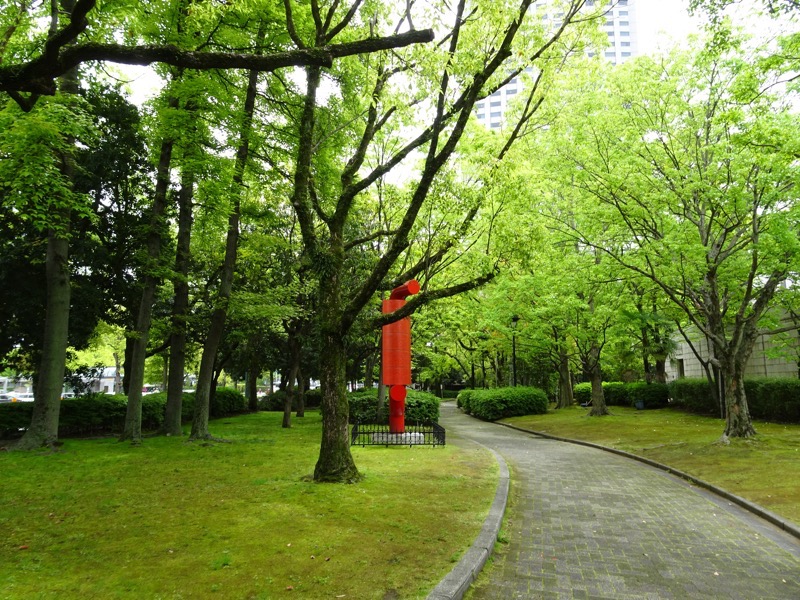
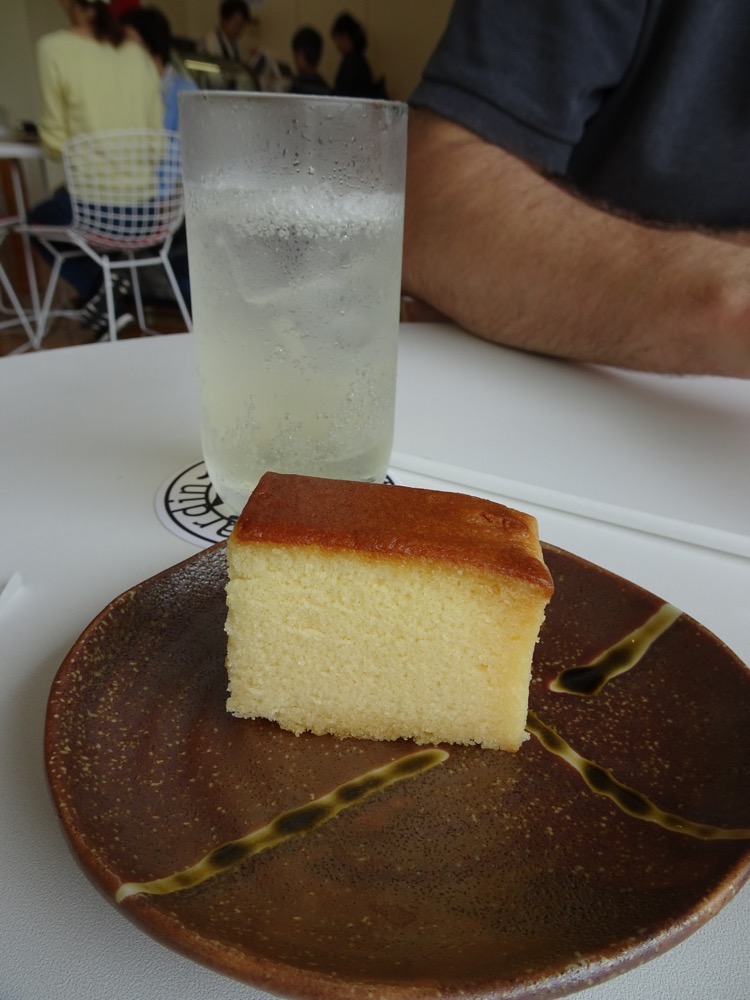
The Orizuru tower. Which is dedicated to those who lost their lives in WWII. Outwardly it is quite a spectacular building – this lovely crane design houses a growing art installation… visitors can go up to the top floor (for a fee) and create or buy a paper crane and drop it into the glass void so that it floats down and joins the thousands of other cranes left by other visitors. Located directly across the road from the Hiroshima Peace Dome it, unfortunately, feels more like a tourist trap than a monument or place of dedication to the horrific loss of human life that occurred here.
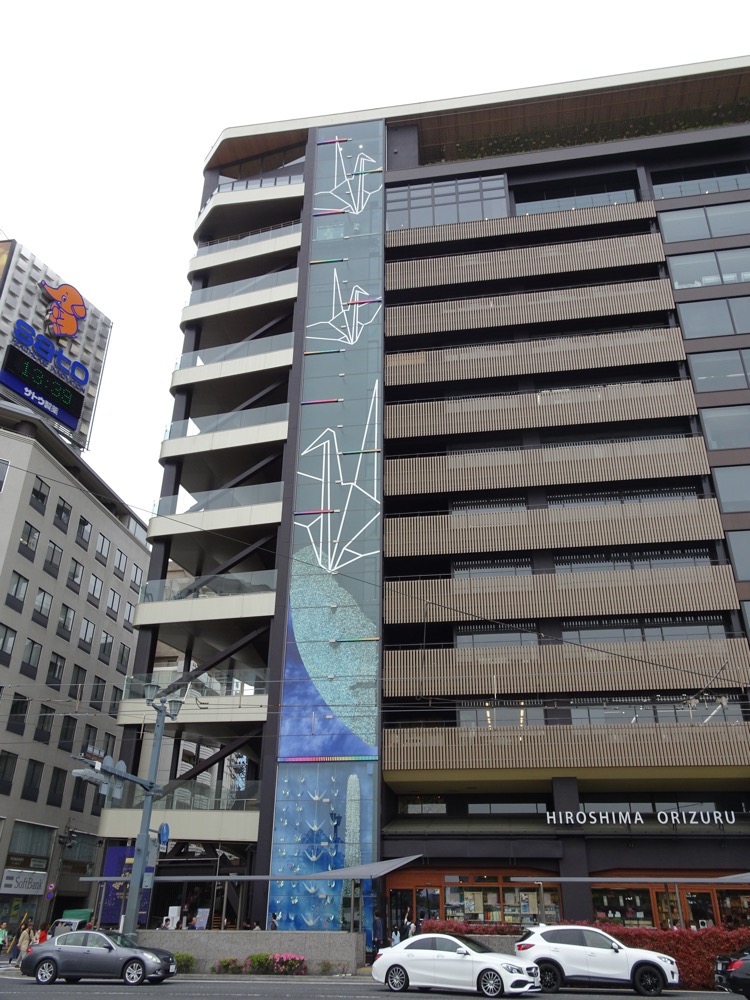
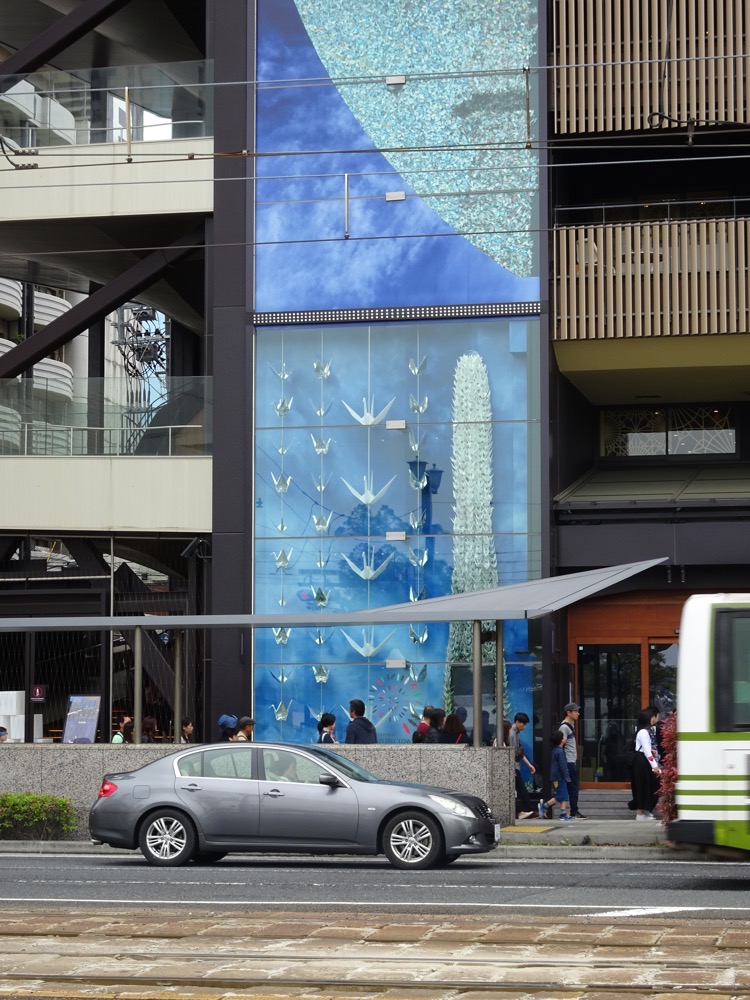
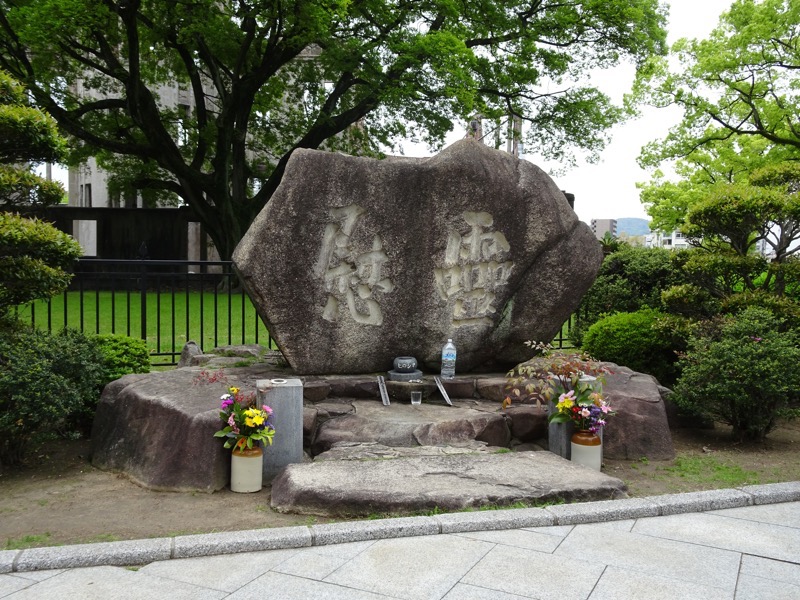 The Hiroshima Peace Memorial was originally the Hiroshima Prefectural Industrial Promotion Hall, and now commonly is more commonly known as the Genbaku Dome or the Atomic Bomb Dome. It is part of the Hiroshima Peace Memorial Park which was designated a UNESCO World Heritage Site in 1996. The ruin of the hall is a standing reminder to visitors of the people who were killed here in the atomic bombing of Hiroshima which precipitated the end of WWII. Over 70,000 people are reported to have been killed immediately and an another estimated 70,000 suffered fatal injuries from the radiation fallout.
The Hiroshima Peace Memorial was originally the Hiroshima Prefectural Industrial Promotion Hall, and now commonly is more commonly known as the Genbaku Dome or the Atomic Bomb Dome. It is part of the Hiroshima Peace Memorial Park which was designated a UNESCO World Heritage Site in 1996. The ruin of the hall is a standing reminder to visitors of the people who were killed here in the atomic bombing of Hiroshima which precipitated the end of WWII. Over 70,000 people are reported to have been killed immediately and an another estimated 70,000 suffered fatal injuries from the radiation fallout.
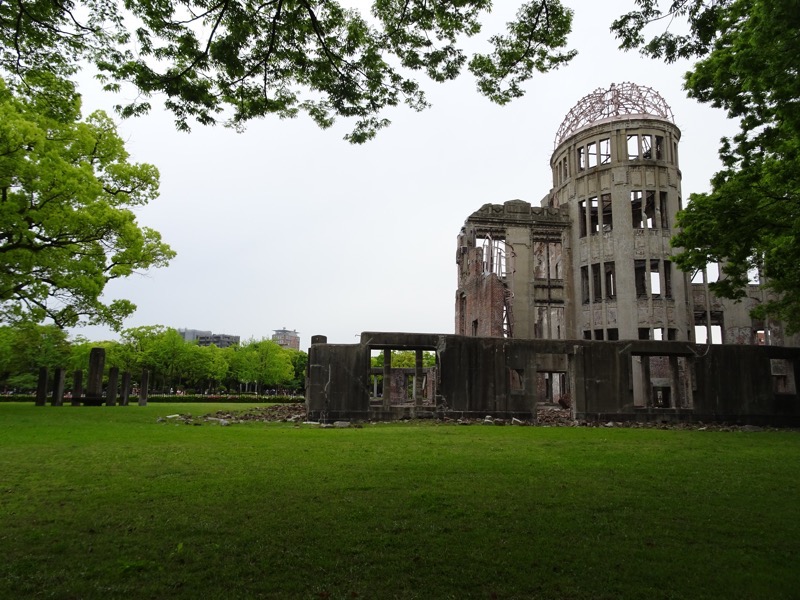
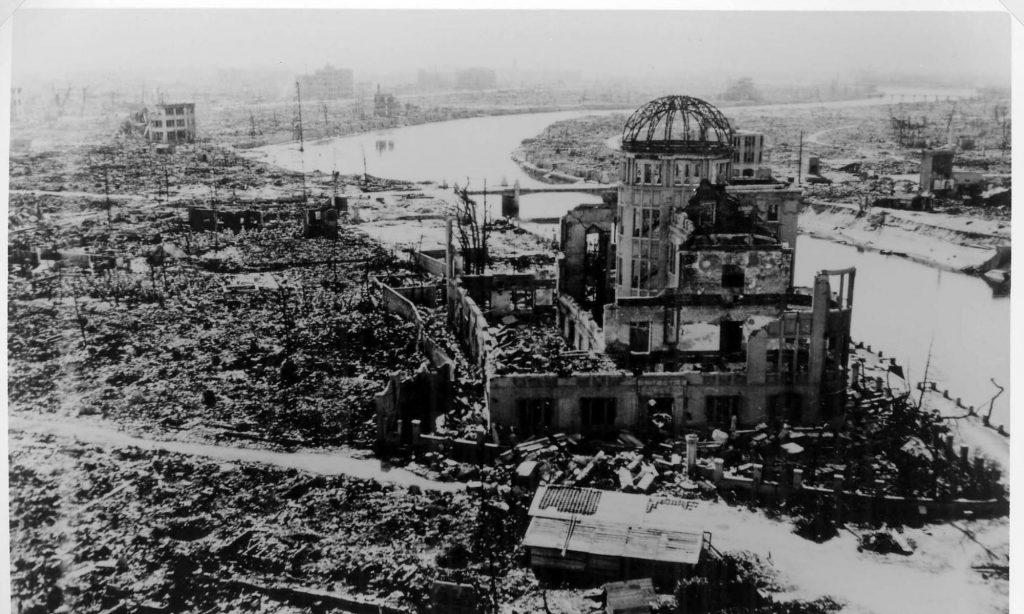
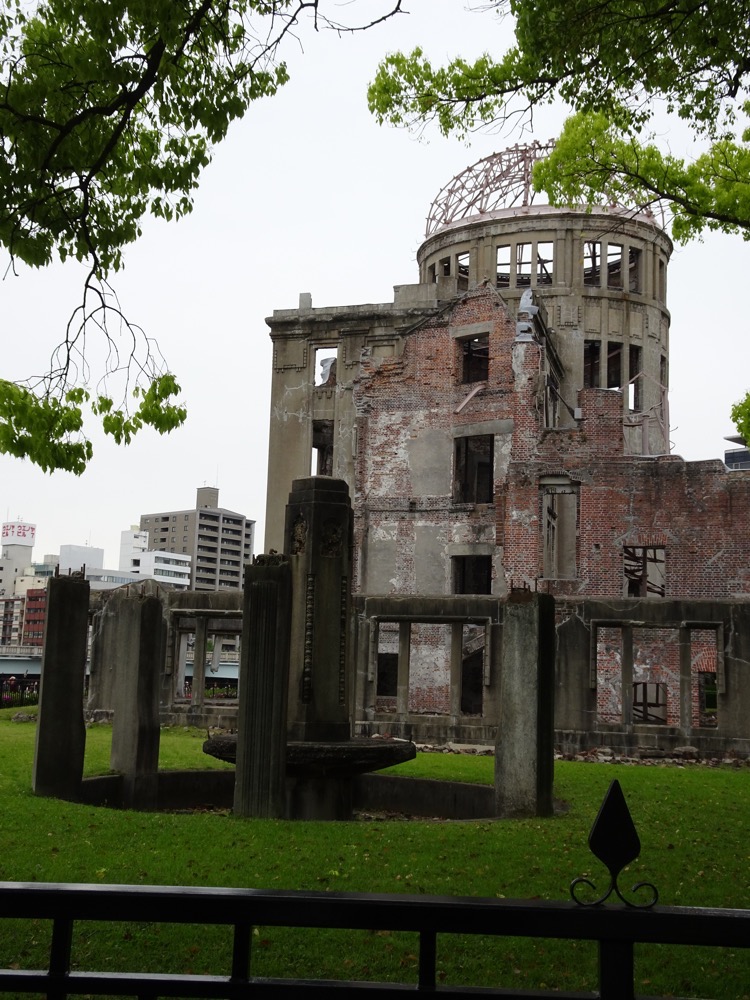 This small monument beside an ordinary apartment building marks the epicentre of the blast. The bomb was detonated 600m above the ground and the ensuing blast saw temperatures of 3000-4000C at ground level.
This small monument beside an ordinary apartment building marks the epicentre of the blast. The bomb was detonated 600m above the ground and the ensuing blast saw temperatures of 3000-4000C at ground level. 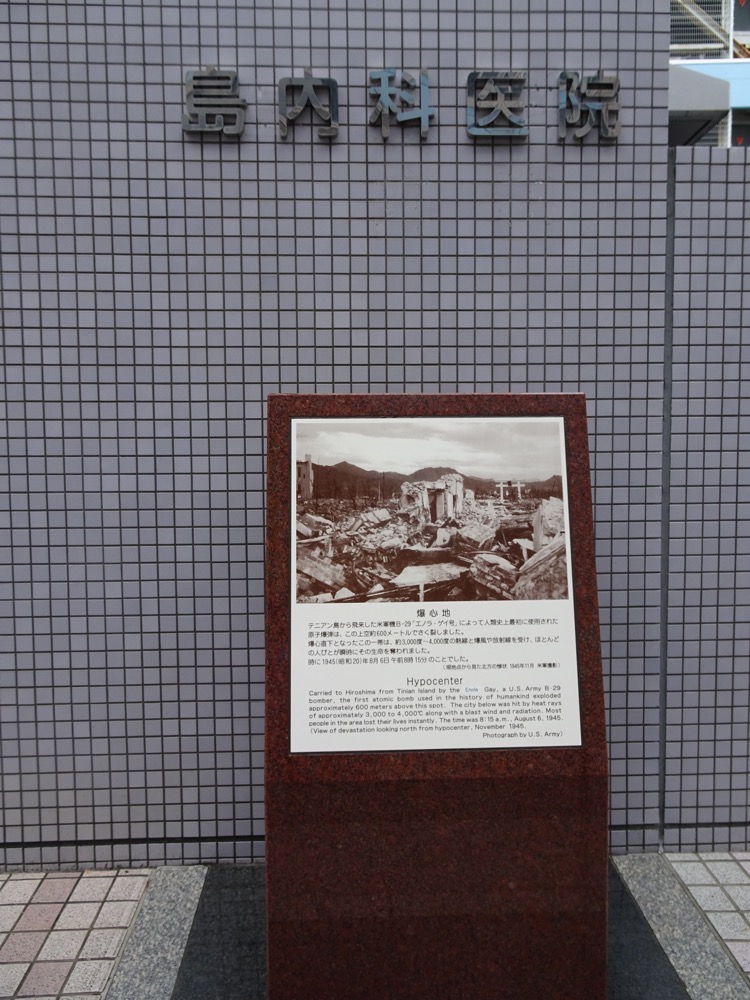 The Hiroshima bombing on 6th August 1945 which killed 70,000 did not see Japan immediately surrender their position in the war, causing the US forces to drop more atomic bombs in Nagasaki (where the Mitsubishi shipbuilding yards were located) on 9th August 1945 which killed up to an estimated 246,000 people, at which point Japan capitulated.
The Hiroshima bombing on 6th August 1945 which killed 70,000 did not see Japan immediately surrender their position in the war, causing the US forces to drop more atomic bombs in Nagasaki (where the Mitsubishi shipbuilding yards were located) on 9th August 1945 which killed up to an estimated 246,000 people, at which point Japan capitulated.
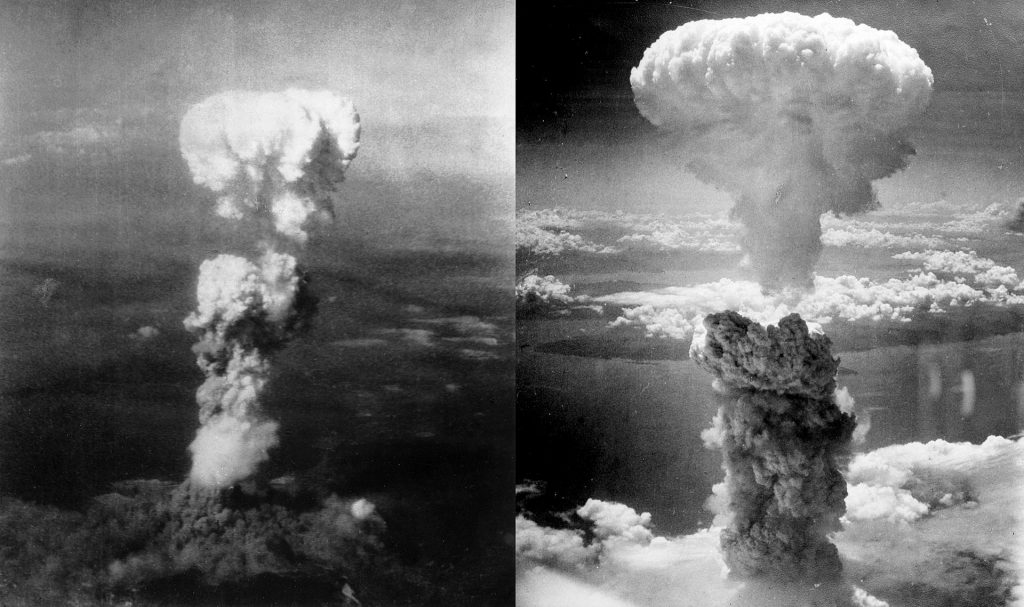 Two aerial photos of atomic bomb mushroom clouds, over Hiroshima (left) and Nagasaki (right) in 1945.
Two aerial photos of atomic bomb mushroom clouds, over Hiroshima (left) and Nagasaki (right) in 1945.
Further into the Peace Park is the Children’s Monument for peace. It was built to commemorate a little girl named Sadako Sasaki and the thousands of unknown child victims of the atomic bombing. Sadako Sasaki, was a young girl who was exposed to radiation at the time of the atomic bomb at age 2, and died from leukaemia at age 12.
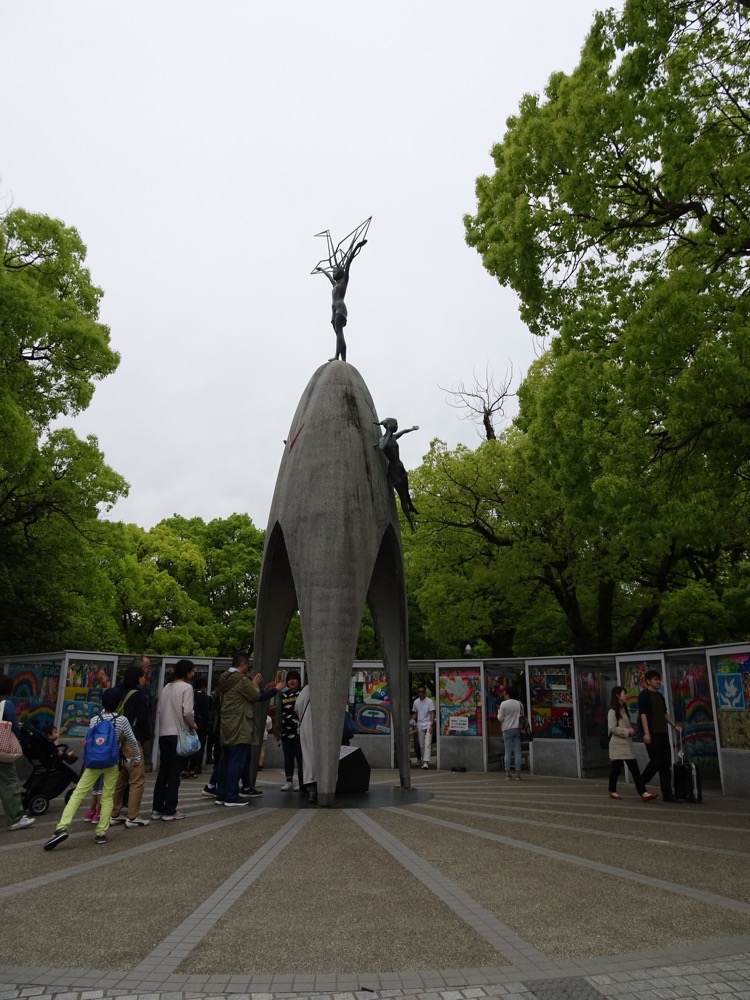 Children from all over Japan engage in making origami peace cranes and sending them to Nagasaki and Hiroshima. It is a mission/endeavour designed to remind people of the necessity for peace and to commemorate the loss of life in WWII.
Children from all over Japan engage in making origami peace cranes and sending them to Nagasaki and Hiroshima. It is a mission/endeavour designed to remind people of the necessity for peace and to commemorate the loss of life in WWII.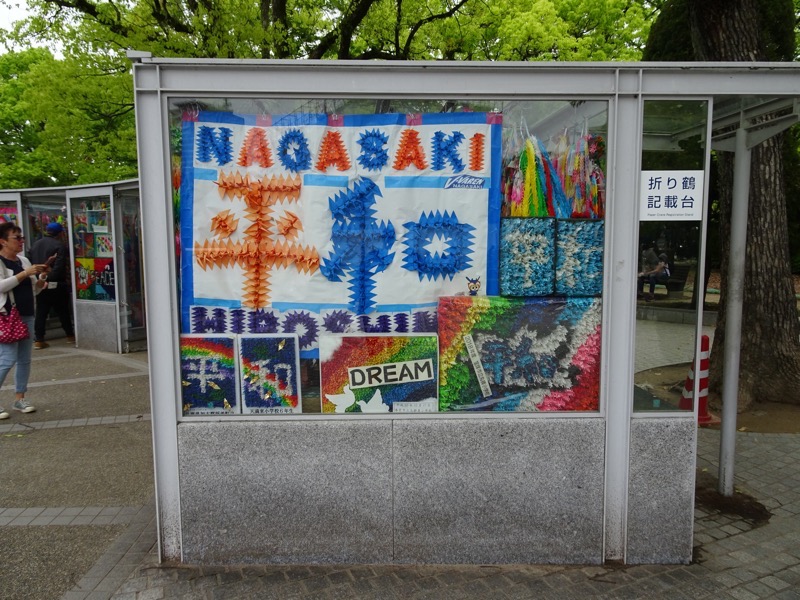
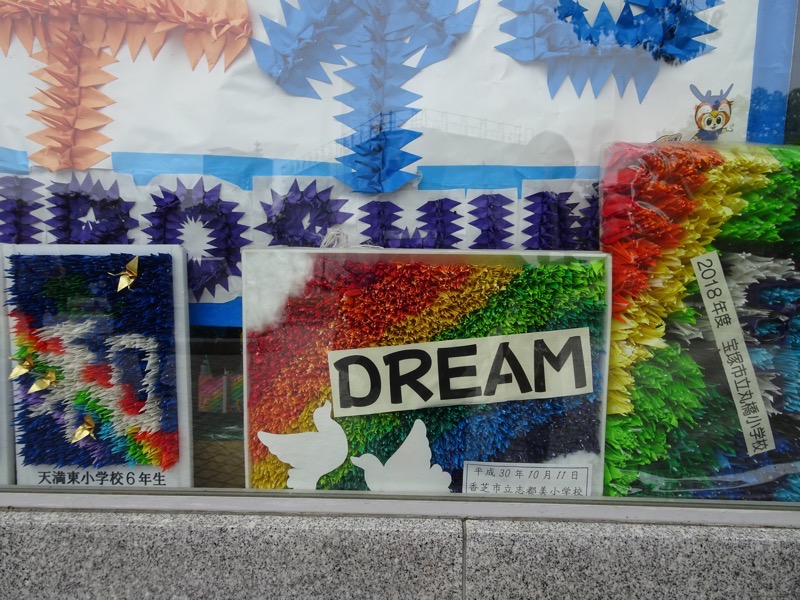
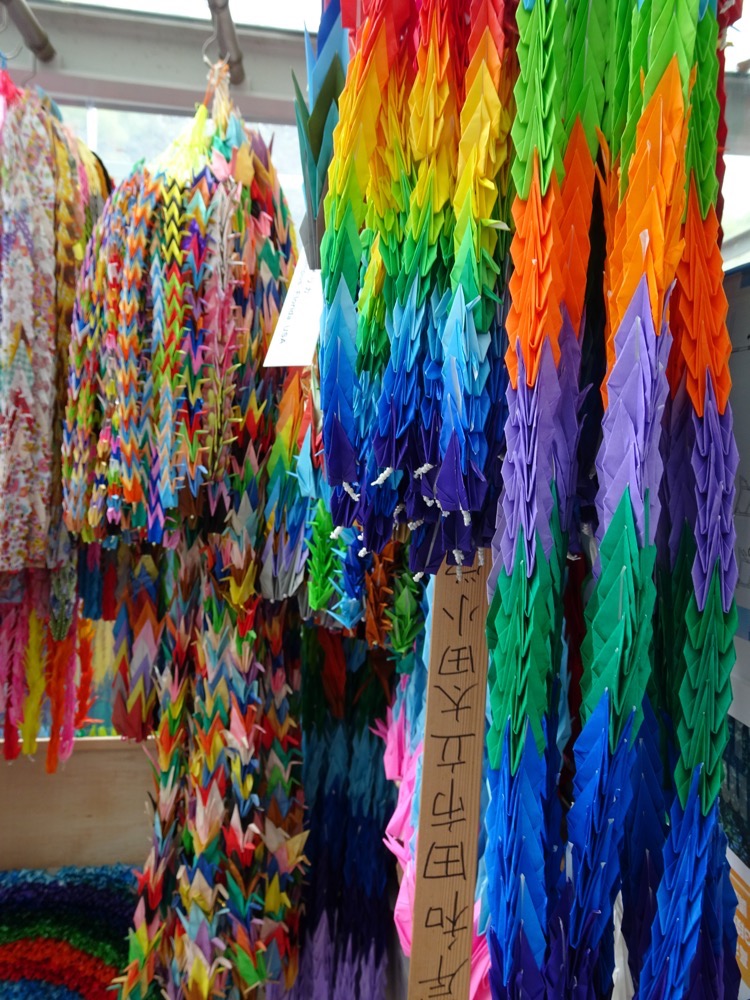 Further down into the Peace Park is an eternal flame… not very visible in this image.
Further down into the Peace Park is an eternal flame… not very visible in this image.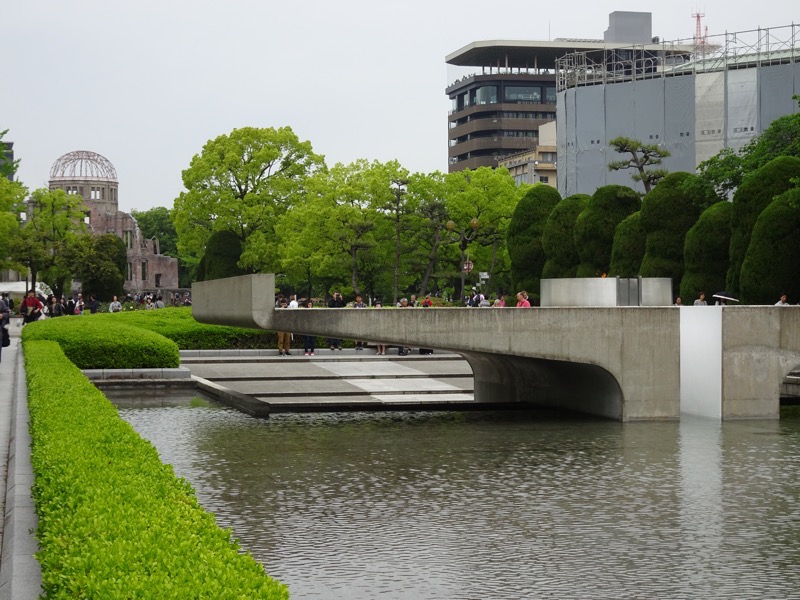
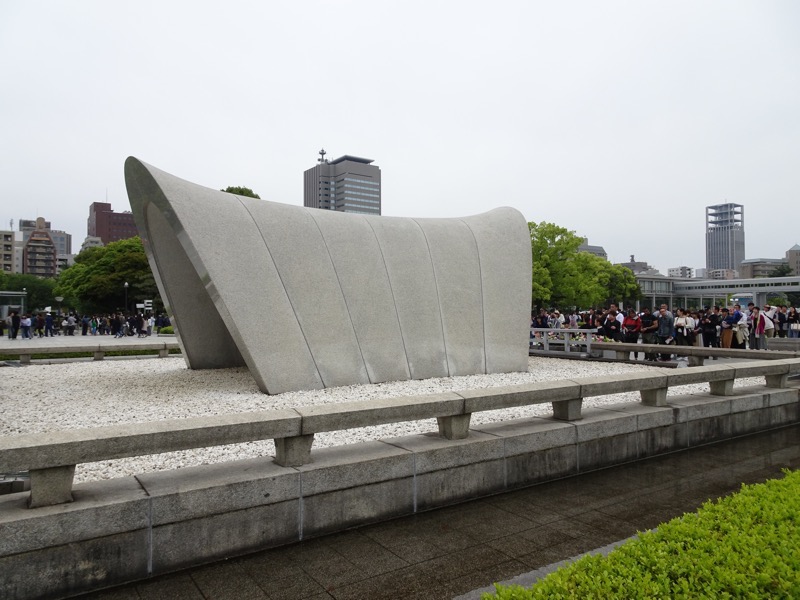
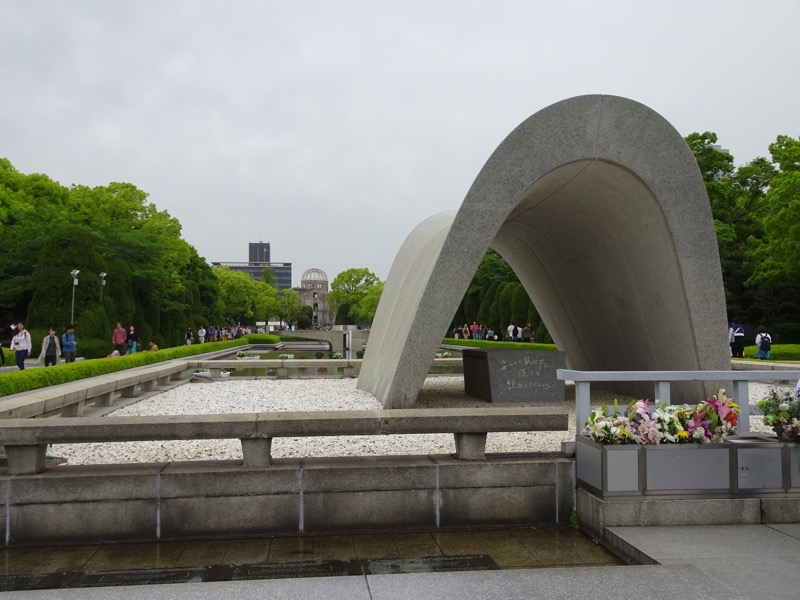
The long mall leads onto the Hiroshima Atomic Bombing museum – unfortunately, (or fortunately, depending on how you look at it) the main buildings that house the museum displays are closed and undergoing earthquake preparedness reconstruction, so the many visitors that were in the park today were lined up to see half the collection and the line stretched for night on half a kilometer. We decided we would very likely be coming back to Hiroshima one day and would like to see the collection in full.
There is obviously much, much more to the history of Hiroshima and the devastation this city experienced. I think we all have an obligation to know and understand how these things impacted on their contemporary populations – if for no other reason than to stop the incessant posing for smiling selfies in these solemn places of commemoration. I have seen it at Gallipoli, the Jewish memorial in Berlin and even at Auschwitz… people are ignorant, and I don’t understand how they can repeatedly pose, fixing their hair or makeup, with their best pouty winky faces, at a site where 70,000 people were killed in an atrocious act of war. :'(
It was nearly 1600 now and we only just realised we hadn’t had anything to eat since 0700, so we head back to Shin-Hiroshima and went looking for something to eat. One thing we noticed almost as soon as we got to Hiroshima was that okonomiyaki was king here! There were more okonomiyaki restaurants than you could possibly count. Some of which were mysteriously empty…? And some of which had queues out the door. We chose one with a short queue, but which had a substantial queue by the time we left.
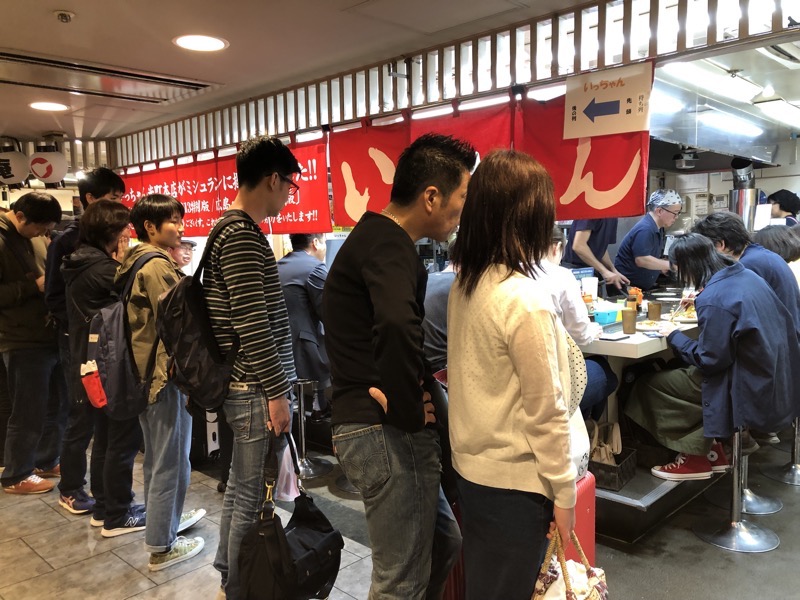

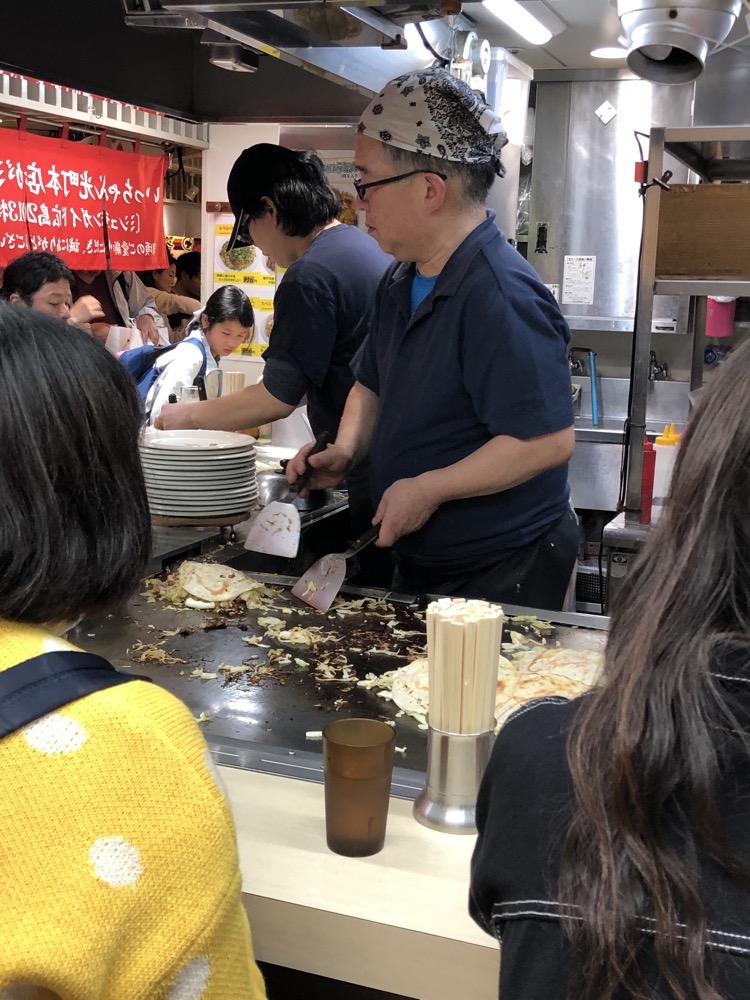 Shrimp and calamari Hiroshima style (soba noodles added) okonomiyaki. Very tasty and very filling. I couldn’t finish it, which no doubt pleased Mr K enormously.
Shrimp and calamari Hiroshima style (soba noodles added) okonomiyaki. Very tasty and very filling. I couldn’t finish it, which no doubt pleased Mr K enormously. While waiting in line at the 7/11 to buy some sake for the train ride, I saw this… Jump onto xe.com and check out the exchange rate, and weep a little. These are shitty convenience store at the train station prices too! We pay so much tax on alcohol in Australia.
While waiting in line at the 7/11 to buy some sake for the train ride, I saw this… Jump onto xe.com and check out the exchange rate, and weep a little. These are shitty convenience store at the train station prices too! We pay so much tax on alcohol in Australia.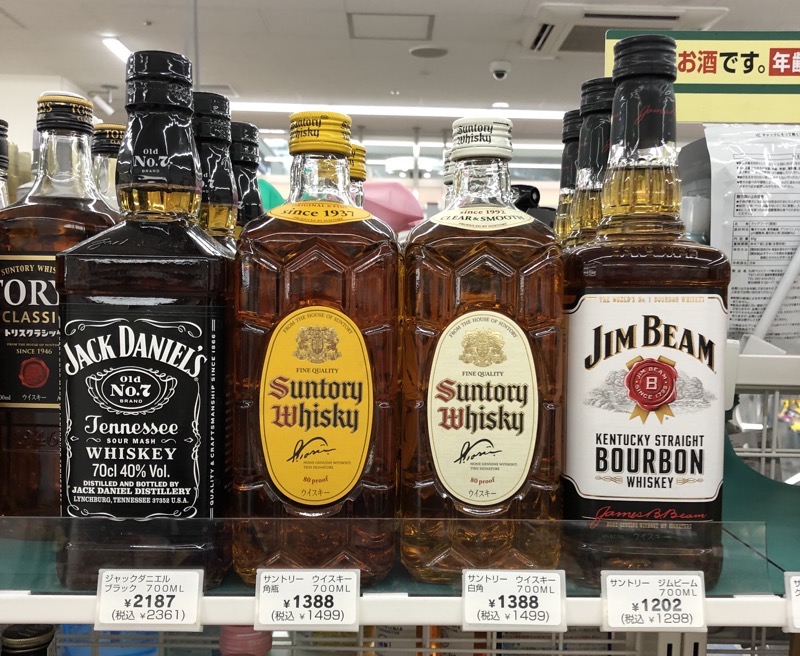 Also at the shopping centre near the train station – Hokkaido style cheese tarts with a local hint of Hiroshima lemony goodness! A special treat that I felt was well deserved after standing on the train this morning and walking over 12.5kms today on hard concrete pathways.
Also at the shopping centre near the train station – Hokkaido style cheese tarts with a local hint of Hiroshima lemony goodness! A special treat that I felt was well deserved after standing on the train this morning and walking over 12.5kms today on hard concrete pathways.
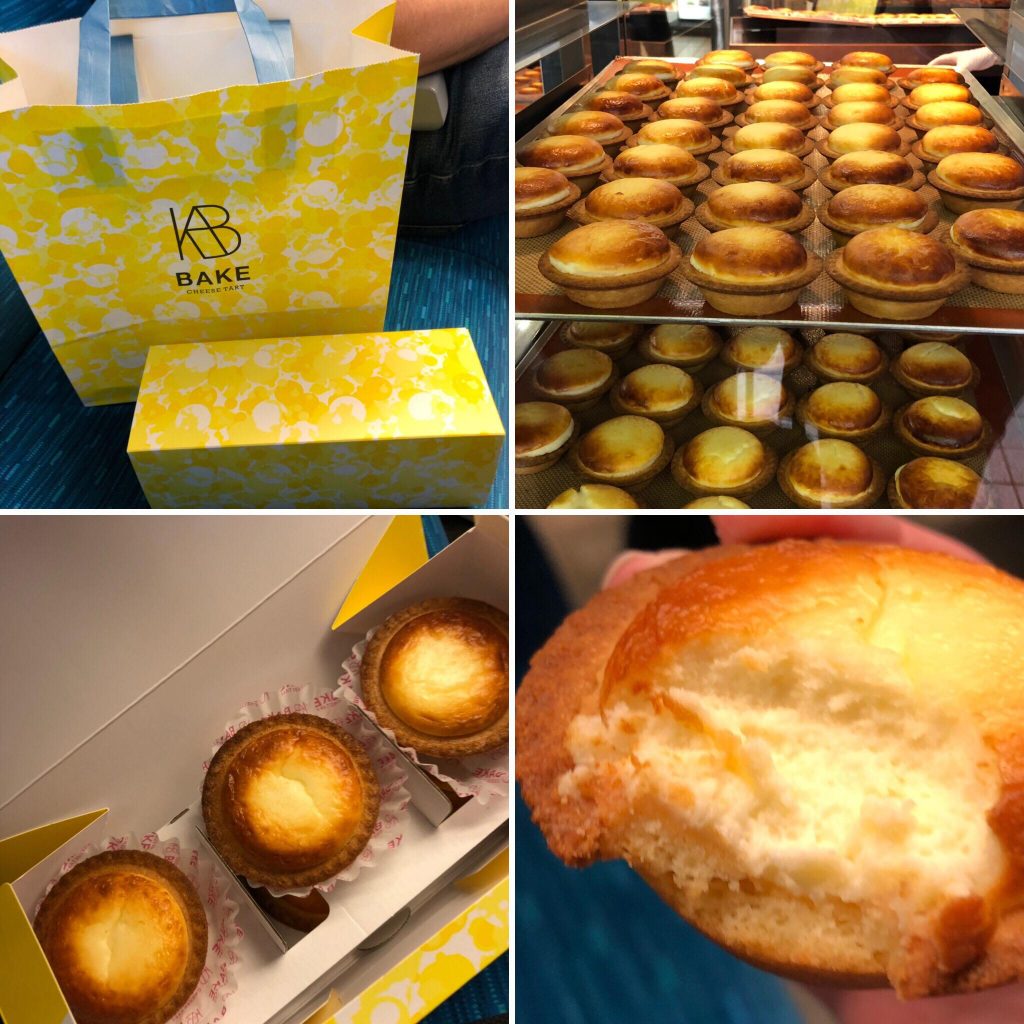 Then it was back onto the Shinkansen to head back to Osaka. We needed have worried about reserving me a seat, as it happens the trains heading back the other way were all largely empty, but I was eternally grateful that I had been carrying the knowledge around all day that I would not be tortured for hours by being forced to stand on the train ride back to Osaka.
Then it was back onto the Shinkansen to head back to Osaka. We needed have worried about reserving me a seat, as it happens the trains heading back the other way were all largely empty, but I was eternally grateful that I had been carrying the knowledge around all day that I would not be tortured for hours by being forced to stand on the train ride back to Osaka.
When we got back to Osaka we went looking for the Hanshin Tigers merchandise store so Mr K could find himself a baseball cap from one of Japan’s premier baseball teams, and I found myself walking through a wine tasting wonderland. There were hundreds of people in here with so much wine from all over the world to try. People were working hard to shove wine at us, and I was so disappointed that there was not a single bottle of sake in sight!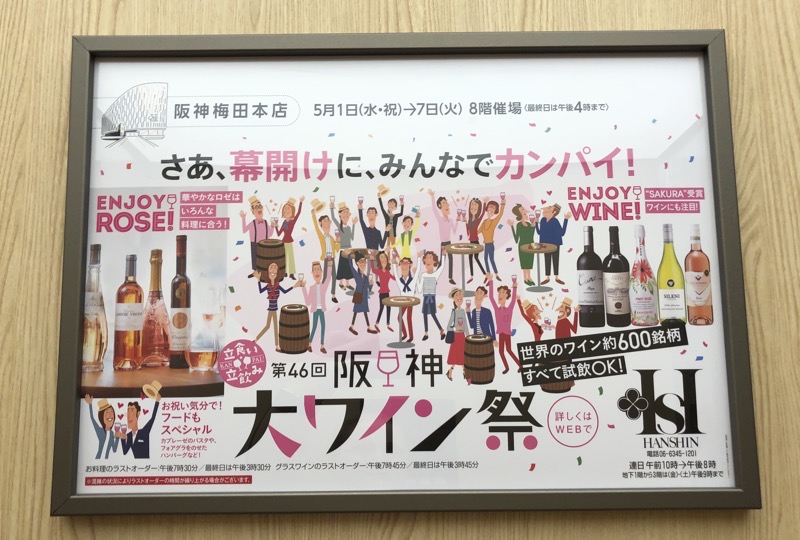
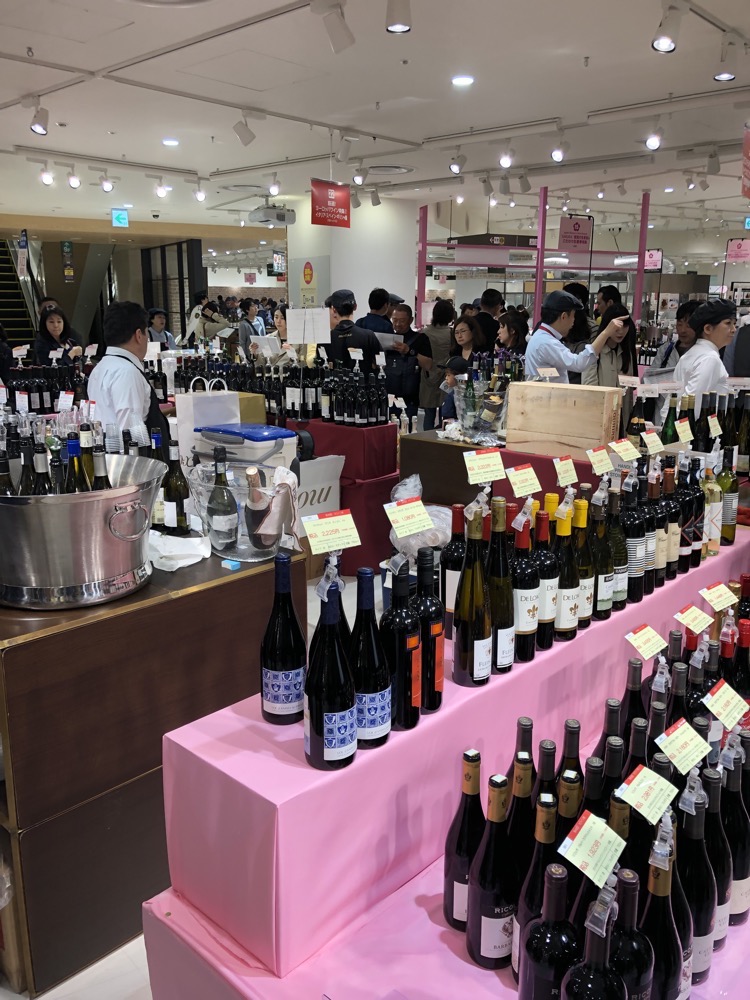
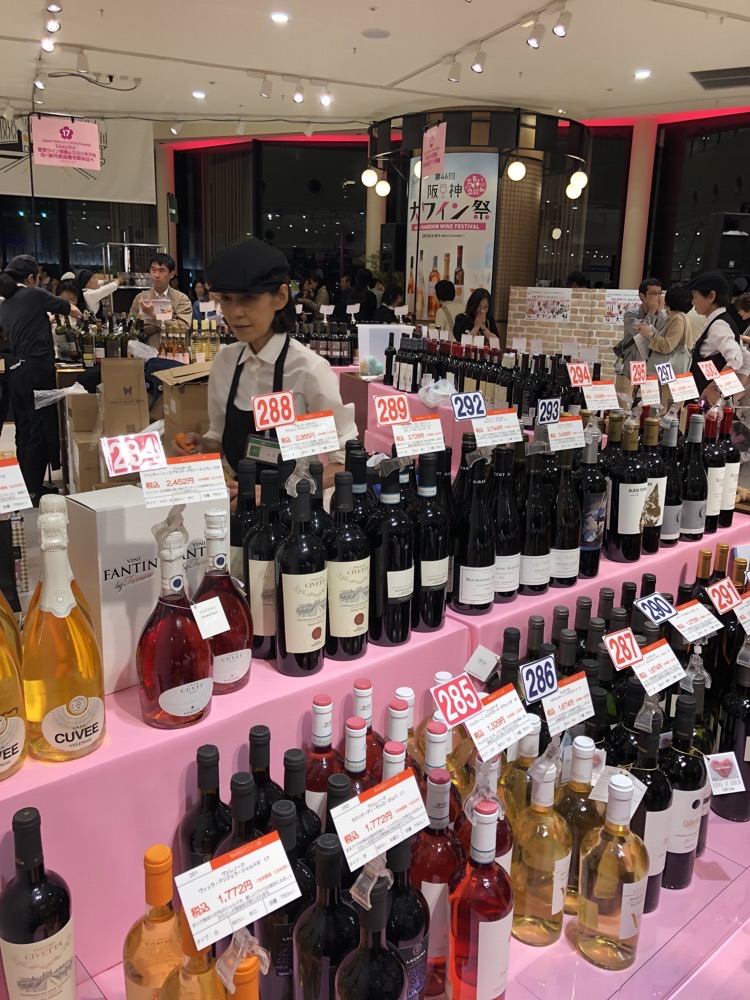 A couple of the vendors were asking me if I wanted to try any wines, but they rapidly gave up after hearing I was Australian… I have a feeling the event was designed for promotion, education and sales of international wines, and they probably assumed that flogging wine to travelling Australians might be a waste of time and effort.
A couple of the vendors were asking me if I wanted to try any wines, but they rapidly gave up after hearing I was Australian… I have a feeling the event was designed for promotion, education and sales of international wines, and they probably assumed that flogging wine to travelling Australians might be a waste of time and effort.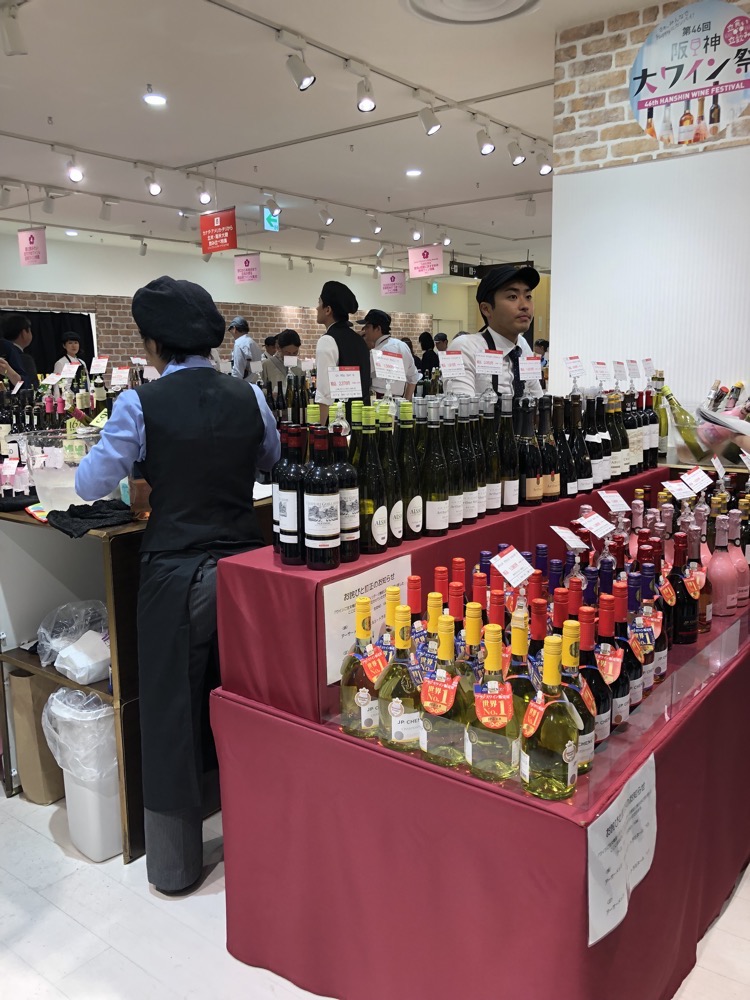 We eventually got back to our Hotel Samurai at about 9pm…? Ever such a long day and I was in soooo much pain. Thank you past me for the suite I booked came that complete with hot tub! So far, each evening has ended in a soak with sake. Tomorrow is another day – and likely one that won’t have an early start!
We eventually got back to our Hotel Samurai at about 9pm…? Ever such a long day and I was in soooo much pain. Thank you past me for the suite I booked came that complete with hot tub! So far, each evening has ended in a soak with sake. Tomorrow is another day – and likely one that won’t have an early start!
